- About Us 👨👩👧

The Negative Environmental Impacts of Tourism
The tourism industry is one of the fastest growing industries in the world. On a local, national, and international level, tourism is economically and environmentally significant actor that has great power to affect the future development.
Tourism has the capacity to help support communities and instigate positive environmental change when done with the right approach towards the long-term sustainability in regions and complying with the UN’s 17 Sustainable Development Goals that range from eradicating hunger, gender equality to addressing climate actions based on the specific regional needs.
We can see the rise of the positive trend in the last years. Ecotourism and sustainable tourism have gained popularity in the industry but there are still many areas where improvements need to be done. If the number of tourists in a given area is greater than the capacity of the local environment or supporting infrastructure (which is the case of many popular destinations), negative impacts quickly arise and can become overwhelming for the system.
As we embark on new adventures in foreign countries it’s important to realize what environmental impacts our presence poses to local ecosystems and resources. According to the United Nations Environment Programme (UNEP), the three negative environmental impacts of tourism are: the depletion of natural resources, pollution and physical degradation of ecosystems. We will look at these more in detail now.
How does tourism affect the environment? The negative environmental impacts of tourism
Tourism sector has great influence over wellbeing of local residents. It is an industry that flourishes in large cities as well as remote rural areas rich in natural wonders. For many distant communities, tourism is the only opportunity of generating sufficient income to sustain their lifestyle and traditions. It can bring lot of good to regions, but also lot of bad – fast degradation, extinction, and depletion, if not done with the long-term planning and preservation in mind.
In some situations, it is difficult to realize this negative influence until its too late. We already have a few negative examples and data to look at to see the degrading tendency.
#1 The depletion of natural resources
The depletion of natural resources is a growing concern especially in places where resources are already scarce. Water, in particular, is considered a critical resource which is greatly misused in the tourism sector.
I. Water overuse
In many popular tourist destinations, water is overused by tourists in hotels, for breathtaking swimming pools and luxurious wellness areas. When on vacation, most travelers tend to use much more water for personal use than at home, resulting in larger quantities of wastewater and creating water shortages which affect local residents.
The high tourism season goes usually against the natural water cycle of an area and doesn’t consider years with insufficient rainfall – a problem that is on the rise due to climate shift. The driest months of the year are the months of peaking demand for water in resorts and areas of a special tourist interest. These places get crowded with people who expect to have unlimited accessibility to clean water supply from local sources.
This creates many problems for residents in not having enough water for basic daily needs, as groundwater is often redirected and overdrawn by large hotels, resulting in drying wells of small communities, and increasing salinity of the remaining water table from dissolved minerals in the soil. Additionally, many small farmers struggle with not having water to grow crops – especially during drier years when it hasn’t rained for months.
A special report on Water Equity in Tourism from 2012 mentions a sad statistic. Globally, almost 900 million people still lack access to clean water and 2 million people (mostly children) die every year due to the health problems arising from this hindered access. These numbers include people from countries with popular destinations, mainly in the Global South or Mediterranean.
Zanzibar, Bali, India, but even Greece and Spain are suffering of these consequences. In Zanzibar, an average household consumes a little over 93 liters of water per day, while an average consumption per room in a guesthouse is 686 liters. That is 7 times more. But the difference is even bigger when it comes to a luxurious 5-star hotel room. The consumption rises to unbelievable 3,000+ liters of water per day [3] .
Tourism and agriculture compete for water also in Spain. Spain is important producer of vegetables and fruits for the rest of Europe. The intensive agriculture and greenhouse cultivation requires water to keep up with the demand. At the same time, the country is one of the world’s leading tourist destinations with great demand for water despite the fact that the country has been drought stricken for a couple years in a row due to climate change [4] . Both of these important economic sectors are standing against each other in an unsustainable way.
II. Other resources
The tourism industry depends upon consumption of renewable and non-renewable resources that are available at a given location. This includes variety of minerals, metals, and biomass resources. The industry burns higher amounts of fossil fuels and therefore produces greenhouse gases; affects health of fertile soils needed to grow enough food, and hurts whole ecosystems like, for example, forests or biodiverse wetlands , and this way the impacts reach even the local wildlife. When more recreational facilities are built, natural habitats with their riches are destroyed and animals are driven away into scarce natural areas or conflict with other human projects.
Land resources, such as forests, are affected when trees are used for building materials or collected for fuel. Tourist attractions and accommodations are heavily reliant on energy for heating, provision of hot water and electricity. That is where the energy demand actually follows the same pattern as water consumption.
Imagine a town like Venice. The town has 271 thousand permanent residents [5] but welcomes every year increasing number of tourists. In 2003, 2.75 million tourists visited the town, while in 2019 this number has risen to 5.5 million [6] . Each visitor consumes energy and resources of the town, further contributing to environmental problems linked with the use of fossil fuels and other non-renewable energy sources.
#2 Overconsumption & Waste production, incl. food waste
What is the most common image of a nice vacation at some beautiful beach town? Good food, drinks at the beach, little refreshments, and attractive sights with a variety of relaxing activities for everyone. When on vacation, most of us want to forget daily responsibilities. This includes meal planning or carrying with us that refillable water bottle or other long-term use items like quality slippers or reusable shopping bags.
When indulging on that new experience, many rely on single-use plastic items that are fast to dispose. In fact, tourists can produce twice that much waste in a day than long term residents. It has been estimated that the marine litter in the Mediterranean increases by up to 40 percent during the peak season [8] .
UNEP estimates that one guest can generate from between 1 to 12 kg of solid waste per day when visiting a new place [9] . The numbers vary based on many factors – location, the type of accommodation, personal preferences, and a character of the stay. Based on the predictions, we would see an increase of 251 percent in solid waste production due to tourism through 2050, if countries do not adopt sustainable practices of addressing product cycle and waste disposal.
Tourists also tend to be more reckless with food. Such behavior contributes to food wasting which is a large problem on its own .
However, waste directly produced by a tourist is not the only waste coming from popular destinations. Large portion of solid waste originates from the background services for tourists – laundries, restaurants, wellness, entertainment and accommodations.
Solid waste and littering can degrade ecosystems and alter the physical appearance of the landscape. Marine litter harms marine life, often leading to their death, and degrades sensitive and unique, yet vital, ecosystems.
As more tourism facilities are built, sewage pollution also increases. Sewage runoff in seas and lakes damages terrestrial and aquatic ecosystems, including vulnerable coral reefs which are often the main attraction of a place. Pollution of waterways in any way can stimulate excessive growth of algae, leading to eutrophication, and alter salinity and siltation of water bodies. These are changes to the environment make it difficult for native plants and animals to survive.
#3 Pollution
Pollution in the tourism industry comes in many forms: increased emissions linked to transport and higher need of energy, solid waste as mentioned in the paragraph above, sewage, oil and chemical spills, but even the less talked about noise and light pollution .
One of the reasons why newly hatched sea turtle babies get confused and head in the opposite direction of water, are the artificial lights we installed along coastlines. Baby turtles have strong instinct to follow the light to guide them to the sea where their life journey begins. In nature, the moon reflection on the water was the brightest point on the beach. Nowadays, however, lamps, bars and other lights shine brighter at night and easily confuse the hatchlings to head in the wrong direction and often lose their life because of that.
Noise pollution arises from transportation and recreational vehicles such as snowmobiles and jet skis. Noisy tourist destinations and thoroughfares can disturb and distress wildlife, especially in sensitive ecosystems that are often the reason why tourists visit the location in the first place.
Cruise ships are among the top polluters. These “floating cities” make extra noise in deep waters and migration routes of many aquatic mammals who are highly sensitive to noise levels in their serene environment. But that’s not all. Cruises release high amounts of raw sewage and waste of passengers directly into the water. Unfortunately, their practices of dealing with waste are not transparent and are corrupt. At the same time, these giant ships burn fossil fuel and release pollutants in the air, including excessive amounts of carbon dioxide [9] .
Scientists have also found that bacteria originating from sewage contamination of coastal waters affect coral reefs in numerous locations and is clearly linked to increased popularity as tourist destination. One badly affected example is the Mesoamerican Reef. The Reef has already lost 80 percent of corals to pollution released from insufficient infrastructure of trending destinations, such as Cancun, Tulum or Playa del Carmen, that host increasing numbers of tourists. The main problem here is too fast development of luxurious resorts without specific plans for upgrading wastewater treatment facilities and infrastructure. Unfortunately, this is a common issue of many special locations of natural beauty.
#4 Greenhouse gas emissions and contribution to global warming
Most human activities that encompass modern lifestyle contribute to greenhouse gas emissions. Add to this travel to some exotic destination half-way across the globe and the number grows even bigger, adding up large chunk to our carbon footprint. In total, tourism accounts for more than 5 percent of global emissions of carbon dioxide. This number has been growing steadily and made up around 1,600 million tons of CO2 in 2016 [10] .
According to a report from the World Tourism Organization (UNWTO), the transport is responsible for 75 percent of carbon dioxide emissions in tourism. Air, road, and rail transportation are the main means of travel among tourists. The most polluting form of travel in terms of emissions are the flights – airplanes accounted for 40 percent out of total CO2 emissions in tourism sector in 2005 – especially due to low prices of flights that made this way of travel accessible to masses. The next significant polluter were cars with 32 percent [10] .
Energy consumption to provide services tourists expect is the next large CO2 contributor after the transport. Most accommodations still rely heavily on fossil fuel energy to run air conditioners, water and room heating and other basic or extra services (spas, pools) that consume lot of power. Unfortunately, the burning of fossil fuels has impacts globally and contributes to climate change .
Energy and transport are both needed even when new resorts are built, or to bring diversity of food to offer to guests, to pick up solid waste, or to clean and maintain recreational areas. Carbon dioxide is not the only gas emitted in the air during these processes, other potent greenhouse gasses such as methane or nitrous oxide are as well. The contribution of tourism to climate change is significant and will grow unless switch to renewable energy is made.
#5 Soil erosion and unsustainable land use
Reckless development and fast expansion of infrastructure, insufficient infrastructure like for example not enough parking spots and cars parked on the edges of roads, too crowded natural sites, disrespect of rules (stepping off the path) can easily kickstart erosive processes and speed up degradation of sites.
Tourism and recreational activities often change soil properties, especially if the number of tourists is greater than the ecosystem capacity to deal with it. In the most visited places, tourists trample the vegetation around trails, slowly creating larger patches of vegetation free surface. Frequently walked trails become compacted, which leads to the decreased soil permeability and higher surface runoff. The combination of these factors then results in progressively eroding trails and areas around them as people try to avoid slippery or muddy surface of the main trail.
The same scenario happens when off-road biking, horse riding, having fun with ATVs or parking cars on the side of the road.
Construction sites of new resorts or their expansion into surrounding natural areas, coastlines or on the mountain sites is a big contributor to erosion. Many projects begin by removing vegetation, which affects the ability of soils to absorb water, often leaving soils exposed and vulnerable for many years before the project is finished.
Impervious surfaces of roads, parking lots or around accommodation units do not allow water to infiltrate into the ground. This increases the surface runoff which washes off fragmented pieces of soil even faster. In some locations, spaces between buildings create pathways for wind that magnify its erosive power.
#6 Physical degradation of ecosystems and loss of biodiversity
It is estimated that the average rate of expansion of tourism is 3 percent in developed countries and can be up to 8 percent in developing countries [11] . The industry has many physical impacts on the environment where growth happens, and more short-term visitors come by to admire the place. Many popular tourist sites are located in areas of sensitive ecosystems. Ecosystems such as rain forests, wetlands, mangroves, coral reefs , sea grass beds and alpine regions are often threatened because they are attractive places to developers and tourists who seek the special feeling of a close contact with nature’s wonders.
Construction and infrastructure development can include extensive paving, sand mining, wetland draining, marine development and deforestation. Unsustainable land use practices can lead to sand dune and soil erosion and the deterioration of the landscape.
Not only is the physical environment under threat but living organisms and their natural cycles are also altered. Ecosystem disturbance can lead to destruction in the long term. Poor building regulations and land use planning can also alter the aesthetic appeal of the local environment. This puts a strain on both the natural environment and indigenous structures of the area.
Around the world are many ecotourism activities and sustainable tourism businesses that keep environmental values at the heart of their business practices. Conventional tourism businesses on the other hand don’t always consider natural resources, pollution and environmental degradation.
Before you jet off on your next travel adventure be sure to take some environmental values with you. To reduce your ecological footprint as a tourist be sure to conserve the amount of water you use, dispose of waste appropriately, tread lightly on the land, and become aware of the local ecosystems you choose to visit. Wherever you may go in the world do your best to support green businesses and minimize your impact on the environment.
Was this article helpful?
About greentumble.
Greentumble was founded in the summer of 2015 by us, Sara and Ovi . We are a couple of environmentalists who seek inspiration for life in simple values based on our love for nature. Our goal is to inspire people to change their attitudes and behaviors toward a more sustainable life. Read more about us .
- Agriculture
- Biodiversity
- Deforestation
- Endangered Species
- Green Living
- Solar Energy
Sliding Sidebar
Tourism is damaging the ocean. Here’s what we can do to protect it

8 million metric tonnes of plastic ends up in the ocean every year. Image: REUTERS/Johannes P. Christo
.chakra .wef-1c7l3mo{-webkit-transition:all 0.15s ease-out;transition:all 0.15s ease-out;cursor:pointer;-webkit-text-decoration:none;text-decoration:none;outline:none;color:inherit;}.chakra .wef-1c7l3mo:hover,.chakra .wef-1c7l3mo[data-hover]{-webkit-text-decoration:underline;text-decoration:underline;}.chakra .wef-1c7l3mo:focus,.chakra .wef-1c7l3mo[data-focus]{box-shadow:0 0 0 3px rgba(168,203,251,0.5);} Jemi Laclé
Aleksandra dragozet, melissa novotny.

.chakra .wef-9dduvl{margin-top:16px;margin-bottom:16px;line-height:1.388;font-size:1.25rem;}@media screen and (min-width:56.5rem){.chakra .wef-9dduvl{font-size:1.125rem;}} Explore and monitor how .chakra .wef-15eoq1r{margin-top:16px;margin-bottom:16px;line-height:1.388;font-size:1.25rem;color:#F7DB5E;}@media screen and (min-width:56.5rem){.chakra .wef-15eoq1r{font-size:1.125rem;}} Ocean is affecting economies, industries and global issues

.chakra .wef-1nk5u5d{margin-top:16px;margin-bottom:16px;line-height:1.388;color:#2846F8;font-size:1.25rem;}@media screen and (min-width:56.5rem){.chakra .wef-1nk5u5d{font-size:1.125rem;}} Get involved with our crowdsourced digital platform to deliver impact at scale
Stay up to date:.
What does the big blue mean to you? Is it a holiday destination, a source of income, as for the 60 million people working in the marine fishing industry, a vital protein source of 151 million tonnes for human consumption, or a home to millions of species? The ocean has a different meaning for everyone, but for all of us, it is a source of life.
Vitamin sea
It is often forgotten that two thirds of the Earth’s surface is covered by water. The ocean is big, resilient and heals the soul, but what happens when it is facing a crisis and cannot revitalize its own wounds? Scientists are predicting that 90% of the world's coral reefs will die by 2050 and that the ocean’s biodiversity is degrading at an alarming pace, due to human activities.
With a growing global middle class and increasing ease of travel, people have achieved greater mobility in recent years. According to United Nations World Tourism Organization, the number of international tourist trips worldwide reached 1.3 billion in 2017, and is predicted to reach 1.8 billion by 2030 .
The World Travel Tourism Council forecasts that the future of travel and tourism will support 400 million jobs and contribute to 25% of global net job creation globally. The infrastructure required to sustain this growth in economic activity has increased pressure on natural resources, biodiversity, as well as on local communities.
Tourism can cause harm, but it can also stimulate sustainable development. When properly planned and managed, sustainable tourism can contribute to improved livelihoods , inclusion, cultural heritage and natural resource protection, and promote international understanding.

Here are three examples of how tourism is harming our oceans, and the efforts to mitigate that harm:
1. The cost of tourism
Various tourist hotspots struggle to manage the ever-expanding influx of travellers. Urban dwellers in cities like Amsterdam, Venice and Barcelona are raising their concerns and anti-tourist sentiment is growing . Tourism-driven gentrification can put pressure on the wellbeing and livelihood of the local community, pushing up real estate prices, making the destination overcrowded, and enhancing shore erosion by tourist activities in coastal areas.
In 2017, Palau and New Zealand started a bold campaign requesting visitors to be environmental agents by signing an eco-pledge when visiting their countries. This small step is crucial to shift visitors’ behaviour towards respecting the culture, protecting the country’s natural and living resources, and preserving the country for future generations.
Awareness of sustainability is more important than ever, as user-generated content and peer-to-peer digital platforms like Instagram, Facebook, Airbnb and TripAdvisor are becoming key influencers of the experience economy, tourism trends, and the attitudes of globetrotters.
2. Toxic sunscreen in our seas
As the number of beachgoers has been growing, so has the use of sun protection products. Many people are unaware but 14,000 tonnes of toxic sunscreen make their way to the underwater world each year. In fact, as many as 82,000 kinds of chemicals from personal care products end up in the oceans. The use of chemical sunscreen, water pollution, coral diseases, rising sea temperatures and ocean acidification, lead to deformations in juvenile corals, bleaching of reefs and prevent corals from growing, reproducing and surviving.
In 2018, Hawaii , Mexico and Aruba announced a ban on non-biodegradable sunscreen lotions. Seychelles took a step further and committed to a blue bond to support the financing of ocean and marine-based projects for positive economic, environmental and climate benefits. It is key to have a holistic and innovative approach to the blue economy as the industry is expected to grow at twice the rate of the mainstream economy by 2030 .
3. Circular tides
Global awareness of the footprint of (micro)plastic from tourism gained momentum in 2018. Researchers estimate that an additional 8 million metric tonnes of plastic ends up in the ocean every year . About 40% of all plastic is in single-use packaging , as tourists litter beaches with straws, coffee cups, water bottles and cigarette butts .
In October 2018, Thailand announced the closing of Maya Beach indefinitely to clean up the unstoppable amount of plastic and drainage that tarnished its coastline. The threat to our oceans requires cross-country and regional collaboration , but most importantly multi-stakeholder global engagements.
Strategic partnerships empowering the public and private sector to reduce plastic waste, develop a circular economy and build sustainable and more resilient communities are critical. The alliance between the world’s largest packaging producers, like the New Plastics Economy Global Commitment are key to forging innovative collective action, and solutions to reducing pollution to save our oceans.
There are both positives and negatives stemming from the increase of human mobility and tourism, therefore it is crucial to find a balance to encourage tourism for economic growth and stimulating sustainable incentives for the conservation of our oceans.
The ocean might seem endless, but we are all on the same boat and need to find mutual solutions to ride the waves together. This is crucial not only for our oceans and marine life, but for human survival.
UpLink is a digital platform to crowdsource innovations in an effort to address the world’s most pressing challenges.
It is an open platform designed to engage anyone who wants to offer a contribution for the global public good. The core objective is to link up the best innovators to networks of decision-makers, who can implement the change needed for the next decade. As a global platform, UpLink serves to aggregate and guide ideas and impactful activities, and make connections to scale-up impact.
Hosted by the World Economic Forum, UpLink is being designed and developed in collaboration with Salesforce, Deloitte and LinkedIn.
Don't miss any update on this topic
Create a free account and access your personalized content collection with our latest publications and analyses.
License and Republishing
World Economic Forum articles may be republished in accordance with the Creative Commons Attribution-NonCommercial-NoDerivatives 4.0 International Public License, and in accordance with our Terms of Use.
The views expressed in this article are those of the author alone and not the World Economic Forum.
The Agenda .chakra .wef-n7bacu{margin-top:16px;margin-bottom:16px;line-height:1.388;font-weight:400;} Weekly
A weekly update of the most important issues driving the global agenda
.chakra .wef-1dtnjt5{display:-webkit-box;display:-webkit-flex;display:-ms-flexbox;display:flex;-webkit-align-items:center;-webkit-box-align:center;-ms-flex-align:center;align-items:center;-webkit-flex-wrap:wrap;-ms-flex-wrap:wrap;flex-wrap:wrap;} More on Nature and Biodiversity .chakra .wef-17xejub{-webkit-flex:1;-ms-flex:1;flex:1;justify-self:stretch;-webkit-align-self:stretch;-ms-flex-item-align:stretch;align-self:stretch;} .chakra .wef-nr1rr4{display:-webkit-inline-box;display:-webkit-inline-flex;display:-ms-inline-flexbox;display:inline-flex;white-space:normal;vertical-align:middle;text-transform:uppercase;font-size:0.75rem;border-radius:0.25rem;font-weight:700;-webkit-align-items:center;-webkit-box-align:center;-ms-flex-align:center;align-items:center;line-height:1.2;-webkit-letter-spacing:1.25px;-moz-letter-spacing:1.25px;-ms-letter-spacing:1.25px;letter-spacing:1.25px;background:none;padding:0px;color:#B3B3B3;-webkit-box-decoration-break:clone;box-decoration-break:clone;-webkit-box-decoration-break:clone;}@media screen and (min-width:37.5rem){.chakra .wef-nr1rr4{font-size:0.875rem;}}@media screen and (min-width:56.5rem){.chakra .wef-nr1rr4{font-size:1rem;}} See all

How household and personal care manufacturers can work towards a nature-positive world
Akanksha Khatri
August 20, 2024

How cement and concrete companies can contribute to a nature-positive economy
August 15, 2024

How climate change affects youth mental health in Pakistan
Henna Hundal and Sikander Bizenjo
August 8, 2024

8 powerful images from the Mangrove Photography Awards 2024
Tom Crowfoot
August 7, 2024

From blocked views to free food: How holiday destinations in Japan, Denmark and more are tackling overtourism
Gabi Thesing, Ian Shine and David Elliott
July 25, 2024

What is the UN's Summit of the Future in 2024 and why is it important?
Kate Whiting
July 23, 2024

14 important environmental impacts of tourism + explanations + examples
The environmental impacts of tourism have gained increasing attention in recent years.
With the rise in sustainable tourism and an increased number of initiatives for being environmentally friendly, tourists and stakeholders alike are now recognising the importance of environmental management in the tourism industry.
In this post, I will explain why the environmental impacts of tourism are an important consideration and what the commonly noted positive and negative environmental impacts of tourism are.
Why the environment is so important to tourism
Positive environmental impacts of tourism, water resources, land degradation , local resources , air pollution and noise , solid waste and littering , aesthetic pollution, construction activities and infrastructure development, deforestation and intensified or unsustainable use of land , marina development, coral reefs, anchoring and other marine activities , alteration of ecosystems by tourist activities , environmental impacts of tourism: conclusion, environmental impacts of tourism reading list.

The quality of the environment, both natural and man-made, is essential to tourism. However, tourism’s relationship with the environment is complex and many activities can have adverse environmental effects if careful tourism planning and management is not undertaken.
It is ironic really, that tourism often destroys the very things that it relies on!
Many of the negative environmental impacts that result from tourism are linked with the construction of general infrastructure such as roads and airports, and of tourism facilities, including resorts, hotels, restaurants, shops, golf courses and marinas. The negative impacts of tourism development can gradually destroy the environmental resources on which it depends.
It’s not ALL negative, however!
Tourism has the potential to create beneficial effects on the environment by contributing to environmental protection and conservation. It is a way to raise awareness of environmental values and it can serve as a tool to finance protection of natural areas and increase their economic importance.
In this article I have outlined exactly how we can both protect and destroy the environment through tourism. I have also created a new YouTube video on the environmental impacts of tourism, you can see this below. (by the way- you can help me to be able to keep content like this free for everyone to access by subscribing to my YouTube channel! And don’t forget to leave me a comment to say hi too!).
Although there are not as many (far from it!) positive environmental impacts of tourism as there are negative, it is important to note that tourism CAN help preserve the environment!
The most commonly noted positive environmental impact of tourism is raised awareness. Many destinations promote ecotourism and sustainable tourism and this can help to educate people about the environmental impacts of tourism. Destinations such as Costa Rica and The Gambia have fantastic ecotourism initiatives that promote environmentally-friendly activities and resources. There are also many national parks, game reserves and conservation areas around the world that help to promote positive environmental impacts of tourism.
Positive environmental impacts can also be induced through the NEED for the environment. Tourism can often not succeed without the environment due the fact that it relies on it (after all we can’t go on a beach holiday without a beach or go skiing without a mountain, can we?).
In many destinations they have organised operations for tasks such as cleaning the beach in order to keep the destination aesthetically pleasant and thus keep the tourists happy. Some destinations have taken this further and put restrictions in place for the number of tourists that can visit at one time.
Not too long ago the island of Borocay in the Philippines was closed to tourists to allow time for it to recover from the negative environmental impacts that had resulted from large-scale tourism in recent years. Whilst inconvenient for tourists who had planned to travel here, this is a positive example of tourism environmental management and we are beginning to see more examples such as this around the world.
Negative environmental impacts of tourism

Negative environmental impacts of tourism occur when the level of visitor use is greater than the environment’s ability to cope with this use.
Uncontrolled conventional tourism poses potential threats to many natural areas around the world. It can put enormous pressure on an area and lead to impacts such as: soil erosion , increased pollution, discharges into the sea, natural habitat loss, increased pressure on endangered species and heightened vulnerability to forest fires. It often puts a strain on water resources, and it can force local populations to compete for the use of critical resources.
I will explain each of these negative environmental impacts of tourism below.
Depletion of natural resources

Tourism development can put pressure on natural resources when it increases consumption in areas where resources are already scarce. Some of the most common noted examples include using up water resources, land degradation and the depletion of other local resources.
The tourism industry generally overuses water resources for hotels, swimming pools, golf courses and personal use of water by tourists. This can result in water shortages and degradation of water supplies, as well as generating a greater volume of waste water.
In drier regions, like the Mediterranean, the issue of water scarcity is of particular concern. Because of the hot climate and the tendency for tourists to consume more water when on holiday than they do at home, the amount used can run up to 440 litres a day. This is almost double what the inhabitants of an average Spanish city use.

Golf course maintenance can also deplete fresh water resources.
In recent years golf tourism has increased in popularity and the number of golf courses has grown rapidly.
Golf courses require an enormous amount of water every day and this can result in water scarcity. Furthermore, golf resorts are more and more often situated in or near protected areas or areas where resources are limited, exacerbating their impacts.
An average golf course in a tropical country such as Thailand needs 1500kg of chemical fertilizers, pesticides and herbicides per year and uses as much water as 60,000 rural villagers.

Important land resources include fertile soil, forests , wetlands and wildlife. Unfortunately, tourism often contributes to the degradation of said resources. Increased construction of tourism facilities has increased the pressure on these resources and on scenic landscapes.
Animals are often displaced when their homes are destroyed or when they are disturbed by noise. This may result in increased animals deaths, for example road-kill deaths. It may also contribute to changes in behaviour.
Animals may become a nuisance, by entering areas that they wouldn’t (and shouldn’t) usually go into, such as people’s homes. It may also contribute towards aggressive behaviour when animals try to protect their young or savage for food that has become scarce as a result of tourism development.
Picturesque landscapes are often destroyed by tourism. Whilst many destinations nowadays have limits and restrictions on what development can occur and in what style, many do not impose any such rules. High rise hotels and buildings which are not in character with the surrounding architecture or landscape contribute to a lack of atheistic appeal.
Forests often suffer negative impacts of tourism in the form of deforestation caused by fuel wood collection and land clearing. For example, one trekking tourist in Nepal can use four to five kilograms of wood a day!
There are also many cases of erosion, whereby tourists may trek the same path or ski the same slope so frequently that it erodes the natural landscape. Sites such as Machu Pichu have been forced to introduce restrictions on tourist numbers to limit the damage caused.

Tourism can create great pressure on local resources like energy, food, and other raw materials that may already be in short supply. Greater extraction and transport of these resources exacerbates the physical impacts associated with their exploitation.
Because of the seasonal character of the industry, many destinations have ten times more inhabitants in the high season as in the low season.
A high demand is placed upon these resources to meet the high expectations tourists often have (proper heating, hot water, etc.). This can put significant pressure on the local resources and infrastructure, often resulting in the local people going without in order to feed the tourism industry.
Tourism can cause the same forms of pollution as any other industry: Air emissions; noise pollution; solid waste and littering; sewage; oil and chemicals. The tourism industry also contributes to forms of architectural/visual pollution.

Transport by air, road, and rail is continuously increasing in response to the rising number of tourists and their greater mobility. In fact, tourism accounts for more than 60% of all air travel.
One study estimated that a single transatlantic return flight emits almost half the CO2 emissions produced by all other sources (lighting, heating, car use, etc.) consumed by an average person yearly- that’s a pretty shocking statistic!
I remember asking my class to calculate their carbon footprint one lesson only to be very embarrassed that my emissions were A LOT higher than theirs due to the amount of flights I took each year compared to them. Point proven I guess….
Anyway, air pollution from tourist transportation has impacts on a global level, especially from CO2 emissions related to transportation energy use. This can contribute to severe local air pollution . It also contributes towards climate change.
Fortunately, technological advancements in aviation are seeing more environmentally friendly aircraft and fuels being used worldwide, although the problem is far from being cured. If you really want to help save the environment, the answer is to seek alternative methods of transportation and avoid flying.
You can also look at ways to offset your carbon footprint .

Noise pollution can also be a concern.
Noise pollution from aircraft, cars, buses, (+ snowmobiles and jet skis etc etc) can cause annoyance, stress, and even hearing loss for humans. It also causes distress to wildlife and can cause animals to alter their natural activity patterns. Having taught at a university near London Heathrow for several years, this was always a topic of interest to my students and made a popular choice of dissertation topic .

In areas with high concentrations of tourist activities and appealing natural attractions, waste disposal is a serious problem, contributing significantly to the environmental impacts of tourism.
Improper waste disposal can be a major despoiler of the natural environment. Rivers, scenic areas, and roadsides are areas that are commonly found littered with waste, ranging from plastic bottles to sewage.
Cruise tourism in the Caribbean, for example, is a major contributor to this negative environmental impact of tourism. Cruise ships are estimated to produce more than 70,000 tons of waste each year.
The Wider Caribbean Region, stretching from Florida to French Guiana, receives 63,000 port calls from ships each year, and they generate 82,000 tons of rubbish. About 77% of all ship waste comes from cruise vessels. On average, passengers on a cruise ship each account for 3.5 kilograms of rubbish daily – compared with the 0.8 kilograms each generated by the less well-endowed folk on shore.
Whilst it is generally an unwritten rule that you do not throw rubbish into the sea, this is difficult to enforce in the open ocean . In the past cruise ships would simply dump their waste while out at sea. Nowadays, fortunately, this is less commonly the case, however I am sure that there are still exceptions.
Solid waste and littering can degrade the physical appearance of the water and shoreline and cause the death of marine animals. Just take a look at the image below. This is a picture taken of the insides of a dead bird. Bird often mistake floating plastic for fish and eat it. They can not digest plastic so once their stomachs become full they starve to death. This is all but one sad example of the environmental impacts of tourism.
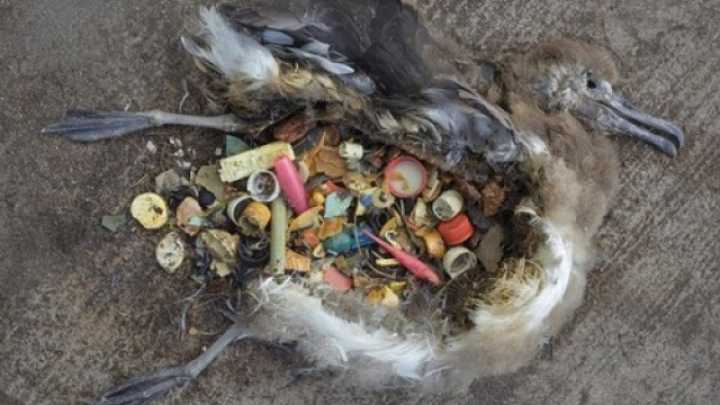
Mountain areas also commonly suffer at the hands of the tourism industry. In mountain regions, trekking tourists generate a great deal of waste. Tourists on expedition frequently leave behind their rubbish, oxygen cylinders and even camping equipment. I have heard many stories of this and I also witnessed it first hand when I climbed Mount Kilimanjaro .

The construction of hotels, recreation and other facilities often leads to increased sewage pollution.
Unfortunately, many destinations, particularly in the developing world, do not have strict law enrichments on sewage disposal. As a result, wastewater has polluted seas and lakes surrounding tourist attractions around the world. This damages the flora and fauna in the area and can cause serious damage to coral reefs.
Sewage pollution threatens the health of humans and animals.
I’ll never forget the time that I went on a school trip to climb Snowdonia in Wales. The water running down the streams was so clear and perfect that some of my friends had suggested we drink some. What’s purer than mountain fresh water right from the mountain, right?
A few minutes later we saw a huge pile of (human??) feaces in the water upstream!!
Often tourism fails to integrate its structures with the natural features and indigenous architecture of the destination. Large, dominating resorts of disparate design can look out of place in any natural environment and may clash with the indigenous structural design.
A lack of land-use planning and building regulations in many destinations has facilitated sprawling developments along coastlines, valleys and scenic routes. The sprawl includes tourism facilities themselves and supporting infrastructure such as roads, employee housing, parking, service areas, and waste disposal. This can make a tourist destination less appealing and can contribute to a loss of appeal.
Physical impacts of tourism development

Whilst the tourism industry itself has a number of negative environmental impacts. There are also a number of physical impacts that arise from the development of the tourism industry. This includes the construction of buildings, marinas, roads etc.

The development of tourism facilities can involve sand mining, beach and sand dune erosion and loss of wildlife habitats.
The tourist often will not see these side effects of tourism development, but they can have devastating consequences for the surrounding environment. Animals may displaced from their habitats and the noise from construction may upset them.
I remember reading a while ago (although I can’t seem to find where now) that in order to develop the resort of Kotu in The Gambia, a huge section of the coastline was demolished in order to be able to use the sand for building purposes. This would inevitably have had severe consequences for the wildlife living in the area.

Construction of ski resort accommodation and facilities frequently requires clearing forested land.
Land may also be cleared to obtain materials used to build tourism sites, such as wood.
I’ll never forget the site when I flew over the Amazon Rainforest only to see huge areas of forest cleared. That was a sad reality to see.
Likewise, coastal wetlands are often drained due to lack of more suitable sites. Areas that would be home to a wide array of flora and fauna are turned into hotels, car parks and swimming pools.

The building of marinas and ports can also contribute to the negative environmental impacts of tourism.
Development of marinas and breakwaters can cause changes in currents and coastlines.
These changes can have vast impacts ranging from changes in temperatures to erosion spots to the wider ecosystem.

Coral reefs are especially fragile marine ecosystems. They suffer worldwide from reef-based tourism developments and from tourist activity.
Evidence suggests a variety of impacts to coral result from shoreline development. Increased sediments in the water can affect growth. Trampling by tourists can damage or even kill coral. Ship groundings can scrape the bottom of the sea bed and kill the coral. Pollution from sewage can have adverse effects.
All of these factors contribute to a decline and reduction in the size of coral reefs worldwide. This then has a wider impact on the global marine life and ecosystem, as many animals rely on the coral for as their habitat and food source.
Physical impacts from tourist activities
The last point worth mentioning when discussing the environmental impacts of tourism is the way in which physical impacts can occur as a result of tourist activities.
This includes tramping, anchoring, cruising and diving. The more this occurs, the more damage that is caused. Natural, this is worse in areas with mass tourism and overtourism .

Tourists using the same trail over and over again trample the vegetation and soil, eventually causing damage that can lead to loss of biodiversity and other impacts.
Such damage can be even more extensive when visitors frequently stray off established trails. This is evidenced in Machu Pichu as well as other well known destinations and attractions, as I discussed earlier in this post.

In marine areas many tourist activities occur in or around fragile ecosystems.
Anchoring, scuba diving, yachting and cruising are some of the activities that can cause direct degradation of marine ecosystems such as coral reefs. As I said previously, this can have a significant knock on effect on the surrounding ecosystem.

Habitats can be degraded by tourism leisure activities.
For example, wildlife viewing can bring about stress for the animals and alter their natural behaviour when tourists come too close.
As I have articulated throughout this post, there are a range of environmental impacts that result from tourism. Whilst some are good, the majority unfortunately are bad. The answer to many of these problems boils down to careful tourism planning and management and the adoption of sustainable tourism principles.
Did you find this article helpful? Take a look at my posts on the social impacts of tourism and the economic impacts of tourism too! Oh, and follow me on social media !
If you are studying the environmental impacts of tourism or if you are interested in learning more about the environmental impacts of tourism, I have compiled a short reading list for you below.
- The 3 types of travel and tourism organisations
- 150 types of tourism! The ultimate tourism glossary
- 50 fascinating facts about the travel and tourism industry
National Geographic content straight to your inbox—sign up for our popular newsletters here

What's the problem with overtourism?
With visitor numbers around the world increasing towards pre-pandemic levels, the issue of overtourism is once again rearing its head.
When locals in the charming Austrian lakeside village of Hallstatt staged a blockade of the main access tunnel, brandishing placards asking visitors to ‘think of the children’, it highlighted what can happen when places start to feel overrun by tourists. Hallstatt has just 800 residents but has opened its doors to around 10,000 visitors a day — a population increase of over 1,000%. And it’s just one of a growing number of places where residents are up in arms at the influx of travellers.
The term ‘overtourism’ is relatively new, having been coined over a decade ago to highlight the spiralling numbers of visitors taking a toll on cities, landmarks and landscapes. As tourist numbers worldwide return towards pre-pandemic levels, the debate around what constitutes ‘too many’ visitors continues. While many destinations, reliant on the income that tourism brings, are still keen for arrivals, a handful of major cities and sites are now imposing bans, fines, taxes and time-slot systems, and, in some cases, even launching campaigns of discouragement in a bid to curb tourist numbers.
What is overtourism?
In essence, overtourism is too many people in one place at any given time. While there isn’t a definitive figure stipulating the number of visitors allowed, an accumulation of economic, social and environmental factors determine if and how numbers are creeping up.
There are the wide-reaching effects, such as climate change. Coral reefs, like the Great Barrier Reef and Maya Bay, Thailand, made famous by the Leonardo DiCaprio film, The Beach , are being degraded from visitors snorkelling, diving and touching the corals, as well as tour boats anchoring in the waters. And 2030 transport-related carbon emissions from tourism are expected to grow 25% from 2016 levels, representing an increase from 5% to 5.3% of all man-made emissions, according to the United Nations World Tourism Organisation (UNWTO). More localised issues are affecting locals, too. Renters are being evicted by landlords in favour of turning properties into holiday lets, and house prices are escalating as a result. As visitors and rental properties outnumber local residents, communities are being lost. And, skyrocketing prices, excessive queues, crowded beaches, exorbitant noise levels, damage at historical sites and the ramifications to nature as people overwhelm or stray from official paths are also reasons the positives of tourism can have a negative impact.
Conversely, ‘undertourism’ is a term applied to less-frequented destinations, particularly in the aftermath of the pandemic. The economic, social and environmental benefits of tourism aren't always passed on to those with plenty of capacity and, while tourist boards are always keen for visitors to visit their lesser-known attractions, it’s a more sustainable and rewarding experience for both residents and visitors.

What’s the main problem with it?
Overcrowding is an issue for both locals and tourists. It can ruin the experience of sightseeing for those trapped in long queues, unable to visit museums, galleries and sites without advance booking, incurring escalating costs for basics like food, drink and hotels, and faced with the inability to experience the wonder of a place in relative solitude. The absence of any real regulations has seen places take it upon themselves to try and establish some form of crowd control, meaning no cohesion and no real solution.
Justin Francis, co-founder and CEO of Responsible Travel, a tour operator that focuses on more sustainable travel, says “Social media has concentrated tourism in hotspots and exacerbated the problem, and tourist numbers globally are increasing while destinations have a finite capacity. Until local people are properly consulted about what they want and don’t want from tourism, we’ll see more protests.”
A French start up, Murmuration, which monitors the environmental impact of tourism by using satellite data, states that 80% of travellers visit just 10% of the world's tourism destinations, meaning bigger crowds in fewer spots. And, the UNWTO predicts that by 2030, the number of worldwide tourists, which peaked at 1.5 billion in 2019, will reach 1.8 billion, likely leading to greater pressure on already popular spots and more objection from locals.
Who has been protesting?
Of the 800 residents in the UNESCO-listed village of Hallstatt, around 100 turned out in August to show their displeasure and to push for a cap on daily visitors and a curfew on tour coach arrivals.
Elsewhere, residents in Venice fought long and hard for a ban on cruise ships, with protest flags often draped from windows. In 2021, large cruise ships over 25,000 tonnes were banned from using the main Giudecca Canal, leaving only smaller passenger ferries and freight vessels able to dock.
In France, the Marseille Provence Cruise Club introduced a flow management system for cruise line passengers in 2020, easing congestion around the popular Notre-Dame-de-la-Garde Basilica. A Cruise Lines International Association (CLIA) spokesperson said, “Coaches are limited to four per ship during the morning or afternoon at the Basilica to ensure a good visitor experience and safety for residents and local businesses. This is a voluntary arrangement respected by cruise lines.”
While in Orkney, Scotland, residents have been up in arms at the number of cruise ships docking on its shores. At the beginning of 2023, the local council confirmed that 214 cruise ship calls were scheduled for the year, bringing around £15 million in revenue to the islands. Following backlash from locals, the council has since proposed a plan to restrict the number of ships on any day.

What steps are being taken?
City taxes have become increasingly popular, with Barcelona increasing its nightly levy in April 2023 — which was originally introduced in 2012 and varies depending on the type of accommodation — and Venice expects to charge day-trippers a €5 fee from 2024.
In Amsterdam this summer, the city council voted to ban cruise ships, while the mayor, Femke Halsema, commissioned a campaign of discouragement, asking young British men who planned to have a 'vacation from morals’ to stay away. In Rome, sitting at popular sites, such as the Trevi Fountain and the Spanish Steps, has been restricted by the authorities.
And in Kenya’s Maasai Mara, meanwhile, the Narok County governor has introduced on-the-spot fines for off-roading. He also plans to double nightly park fees in peak season.
What are the forecasts for global tourism?
During the Covid pandemic, tourism was one of the hardest-hit industries — according to UNWTO, international tourist arrivals dropped 72% in 2020. However, traveller numbers have since been rapidly increasing, with double the number of people venturing abroad in the first three months of 2023 than in the same period in 2022. And, according to the World Travel Tourism Council, the tourism sector is expected to reach £7.5 trillion this year, 95% of its pre-pandemic levels.
While the tourism industry is forecast to represent 11.6% of the global economy by 2033, it’s also predicted that an increasing number of people will show more interest in travelling more sustainably. In a 2022 survey by Booking.com, 64% of the people asked said they would be prepared to stay away from busy tourist sites to avoid adding to congestion.
Are there any solutions?
There are ways to better manage tourism by promoting more off-season travel, limiting numbers where possible and having greater regulation within the industry. Encouraging more sustainable travel and finding solutions to reduce friction between residents and tourists could also have positive impacts. Promoting alternative, less-visited spots to redirect travellers may also offer some benefits.
Harold Goodwin, emeritus professor at Manchester Metropolitan University, says, “Overtourism is a function of visitor volumes, but also of conflicting behaviours, crowding in inappropriate places and privacy. Social anthropologists talk about frontstage and backstage spaces. Tourists are rarely welcome in backstage spaces. To manage crowds, it’s first necessary to analyse and determine the causes of them.
Francis adds: “However, we must be careful not to just recreate the same problems elsewhere. The most important thing is to form a clear strategy, in consultation with local people about what a place wants or needs from tourism.”
As it stands, overtourism is a seasonal issue for a small number of destinations. While there is no one-size-fits-all solution, a range of measures are clearly an option depending on the scale of the problem. For the majority of the world, tourism remains a force for good with many benefits beyond simple economic growth.
Related Topics
- OVERTOURISM
- SUSTAINABLE TOURISM
You May Also Like

How can tourists help Maui recover? Here’s what locals say.

What is tourist tax and will you have to pay it in Europe this summer?
Become a subscriber and support our award-winning editorial features, videos, photography, and much more..
For as little as $2/mo.

One of Italy’s most visited places is an under-appreciated wine capital

In this fragile landscape, Ladakh’s ecolodges help sustain a way of life

Cinque Terre’s iconic ‘path of love’ is back. Don’t love it to death

25 breathtaking places and experiences for 2023

See the relentless beauty of Bhutan—a kingdom that takes happiness seriously
- Best of the World
- Environment
- Paid Content
History & Culture
- History & Culture
- Out of Eden Walk
- Mind, Body, Wonder
- Terms of Use
- Privacy Policy
- Your US State Privacy Rights
- Children's Online Privacy Policy
- Interest-Based Ads
- About Nielsen Measurement
- Do Not Sell or Share My Personal Information
- Nat Geo Home
- Attend a Live Event
- Book a Trip
- Inspire Your Kids
- Shop Nat Geo
- Visit the D.C. Museum
- Learn About Our Impact
- Support Our Mission
- Advertise With Us
- Customer Service
- Renew Subscription
- Manage Your Subscription
- Work at Nat Geo
- Sign Up for Our Newsletters
- Contribute to Protect the Planet
Copyright © 1996-2015 National Geographic Society Copyright © 2015-2024 National Geographic Partners, LLC. All rights reserved
2023: the year of overtourism backlash
People are traveling again … maybe too much
- Newsletter sign up Newsletter

The pandemic forced people to embrace the hermit lifestyle. Then, in 2023, travel came back with a vengeance. The phenomenon was dubbed revenge travel , in which people reclaimed lost pandemic time by taking notably exotic and elaborate trips. But many destinations struggled to manage the heightened influx of tourists, and some governments actively took measures to limit the quantity of visitors. The lesson: Overtourism can be just as harmful as undertourism to a community, causing environmental destruction and pressure on local communities and resources.
More is not always merrier
The term "overtourism" is fairly new. It describes "too many people in one place at any given time," according to National Geographic . The exact number constituting "too many" varies from place to place, of course. "An accumulation of economic, social and environmental factors determine if and how numbers are creeping up," the outlet explained.
The problem with too many tourists is that the sheer volume of visitors can displace the local community but also turn the destination unpleasant for tourists themselves. According to Forbes , "a number of the most iconic destinations have become unlivable for local residents and overcrowded, unsafe and uncomfortable for visitors." Many popular European destinations fell victim to exactly this. "Tourists are waiting more than two hours to visit the Acropolis in Athens. Taxi lines at Rome's main train station are running just as long," reported The Associated Press adding that "that crowds get backed up crossing bridges — even on weekdays." Accommodating visitors also compromises housing for local residents. "Renters are being evicted by landlords in favor of turning properties into holiday lets, and house prices are escalating as a result," explained National Geographic. "As visitors and rental properties outnumber local residents, communities are being lost."
Subscribe to The Week
Escape your echo chamber. Get the facts behind the news, plus analysis from multiple perspectives.

Sign up for The Week's Free Newsletters
From our morning news briefing to a weekly Good News Newsletter, get the best of The Week delivered directly to your inbox.
Along with crowding destinations, overtourism can damage the environment. Traveling on a long-haul flight requires the use of fossil fuels and releases emissions. Once tourists arrive at their destination, there is more likely to be trash and debris left behind when they depart which can pollute landscapes and waterways. "So many people flying into the same place degrades local ecosystems and natural defenses against the effects of climate change," noted Energy Monitor . Coral reefs , for example, have been degrading faster because more people are coming into contact with them.
For destinations recovering from disasters, like Maui, Hawaii , overtourism complicates the process of grieving and rebuilding. Hawaiian residents have been vocal in opposing tourism in general but especially following the devastating wildfires. The island has also been under a water conservation notice because of "hotels and resorts taking up [the residents'] share of the water," ABC News reported. As Tobias Jones wrote in The Guardian, "Sites are nothing more than the backdrop for our selfies because we go places not to learn from them, but just to post and boast to others that we’ve been there."
Closing the gates
The growing number of tourists in various locales has caused some governments to take matters into their own hands, implementing methods to cap the number of visitors. A few, like Amsterdam and Venice, banned cruise ships, citing the cruisers' environmental impact. In addition, starting in 2024, Amsterdam will also implement new housing rules, "which aim to increase the housing supply for students, teachers and trainee police officers," Time Out reported. The endgame: more resources for locals, not just for visitors.
Fines and taxes are one of the most common methods for keeping visitors out. Venice implemented a number of fines as well as a day-tripper fee, and Japan is planning on creating a tourist tax and raising transportation costs. In doing so, the country is taking responsibility for "preserving nature, history and culture and passing them on to the next generations," Shunji Mukai, an official of Japan's Miyajima Island planning and coordination division, told Euronews . Other places like the Acropolis in Greece and Machu Picchu in Peru are placing caps on the number of daily visitors.
Overtourism tends to be an especially acute problem during the busy seasons, like summer. Encouraging travel during other times of the year could ease the strain on some of these destinations. Also, "encouraging more sustainable travel and finding solutions to reduce friction between residents and tourists," could reduce the impact on both the environment and communities, according to National Geographic, along with "promoting alternative, less-visited spots."
Sign up for Today's Best Articles in your inbox
A free daily email with the biggest news stories of the day – and the best features from TheWeek.com
Devika Rao has worked as a staff writer at The Week since 2022, covering science, the environment, climate and business. She previously worked as a policy associate for a nonprofit organization advocating for environmental action from a business perspective.

Instant Opinion Opinion, comment and editorials of the day
By Justin Klawans, The Week US Published 21 August 24

Today's Big Question She's been slow to release concrete policy platforms, but there are plenty of hints as to what a potential Harris administration would look like
By Rafi Schwartz, The Week US Published 21 August 24

Speed Read The famous couple are splitting after two years of marriage
By Peter Weber, The Week US Published 21 August 24

In Depth In this walkable city, there is something to see around every corner
By Catherine Garcia, The Week US Published 21 August 24

The Week Recommends These sites have cultural, historical and scientific significance and the international organization's fresh stamp of approval
By Catherine Garcia, The Week US Published 14 August 24

In Depth Paso Robles is a gem among the oaks
By Catherine Garcia, The Week US Published 7 August 24

The Explainer These getaway spots are ideal for conscious travellers who don't want to contribute to the problems of overtourism
By Abby Wilson Published 6 August 24

The Week Recommends After you check in, it's game time
By Catherine Garcia, The Week US Published 6 August 24

The Explainer Ten years on, the impact of the misogyny-fuelled campaign still lingers
By Abby Wilson Published 5 August 24

The Week Recommends Hit the beach, play golf and swim outside while you can
By Catherine Garcia, The Week US Published 30 July 24

The Week Recommends For the quintessential New England experience, head to the Classic Coast
By Catherine Garcia, The Week US Published 25 July 24
- Contact Future's experts
- Terms and Conditions
- Privacy Policy
- Cookie Policy
- Advertise With Us
The Week is part of Future plc, an international media group and leading digital publisher. Visit our corporate site . © Future US, Inc. Full 7th Floor, 130 West 42nd Street, New York, NY 10036.
- Partners and Fundings
- events & news
- green hotels
- who’s talking about us
Overtourism: Causes, Consequences and Solutions
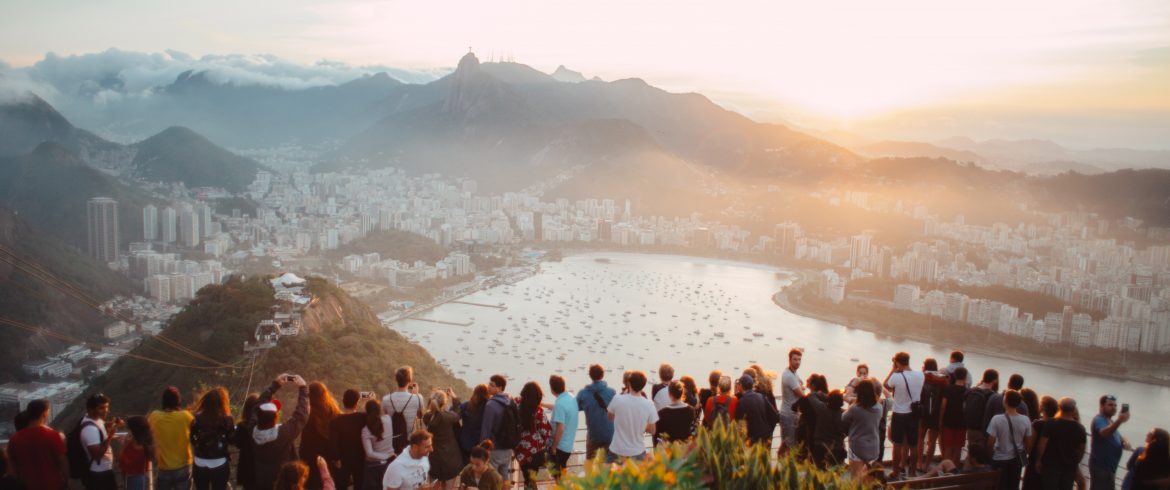
Overtourism : one of the words that people use most in recent years. In effect, more and more often, tourist destinations suffer from overtourism, tourism overcrowding . Places that everyone wants to see because they are “famous”. Movie scenes shot in locations (such as Lake Braies ) that now attract hordes of tourists looking for a short trip. Simply, they stop the time for a selfie and then leave for the next famous stage. This type of mass tourism causes pollution, the devastation of nature and distress of local populations. Let’s see in detail what is overtourism, what are its causes , what are the consequences , and what can be done to avoid it.
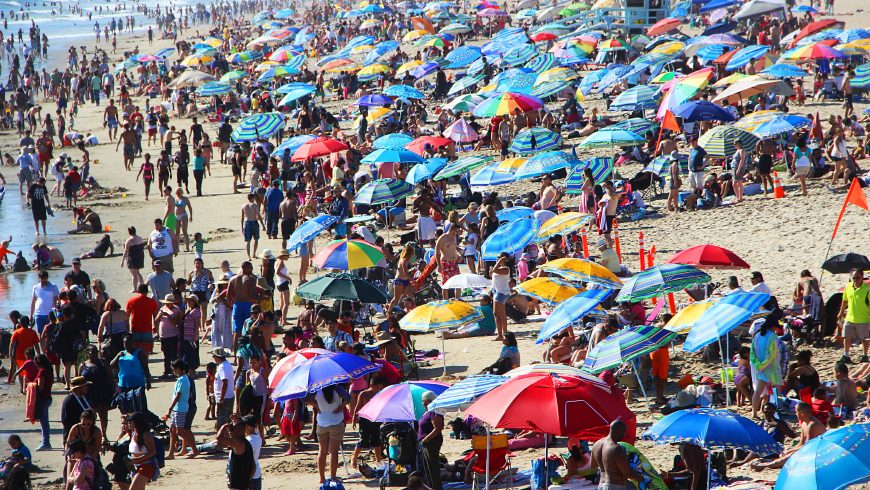
What is overtourism?
Overtourism is a neologism that indicates the overcrowding of tourists on a holiday destination. The term was first inserted in the Oxford dictionary in 2018 and nominated as the year’s word. Overtourism, literally “too much tourism” , is a complex phenomenon that we should analyze from various points of view. In essence, we could sum up the concept in one question. Is this place affected by the presence of more tourists than the place and the inhabitants can support?
When it comes to natural tourist destinations , tourism must respect flora, fauna, and microclimate. When the destination is a city , tourism must primarily r espect residents , as well as local culture and archaeological sites . The latter in particular are small microcosms blocked in time that tourism should protect. If this doesn’t happen, we talk about overtourism, or unsustainable tourism for the place, for nature, for the people who live there.
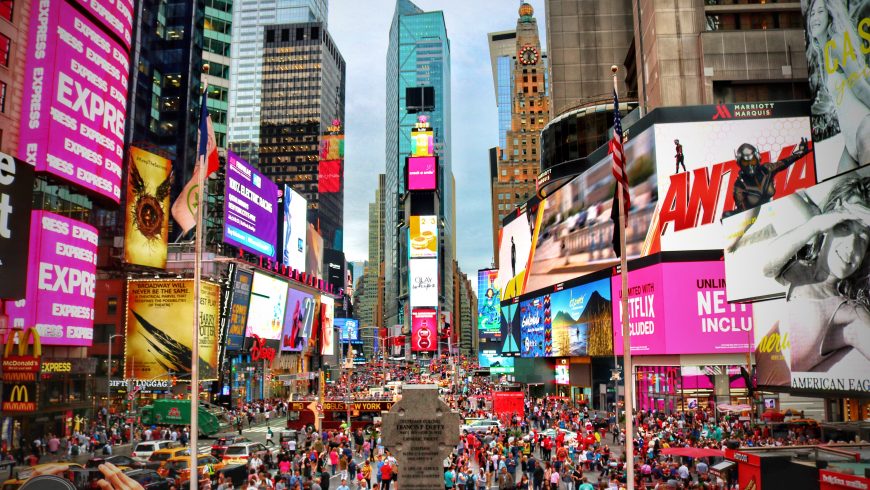
The Causes of overtourism
More than 1.4 billion people are moving around the world every year, and they are growing at an exponential rate. The World Tourism Organisation predicts that by 2030 the international flow of tourists will exceed 2 billion . This very high number of people focus on a few tourist destinations in the world, which suffer from the excessive presence of tourists . The causes of too much tourism are many. From the famous films that make tourist destinations famous to the ease with which you can reach any corner of the world. Also, we can name the cruises that bring large quantities around the seas. We talked about cruises and their environmental impact in this article .

Cultural tourism, a new trend
A trend of the moment is tourism i nfluenced by mass culture . According to this kind of tourism, people chose the destination based on social media , influencers, television programs and films. Tourism influenced by film and TV series products, also known as film tourism , has in some cases led to real disasters. An example is what is happening in the Pacific Islands : in Thailand at Maya Bay , where the film “The Beach” was shot with Leonardo Di Caprio. Over the years, tourists who wanted to see the film set invaded the small beach. This forced the Thai government to prohibit the entry of tourists to restore the delicate balance of the beautiful bay.
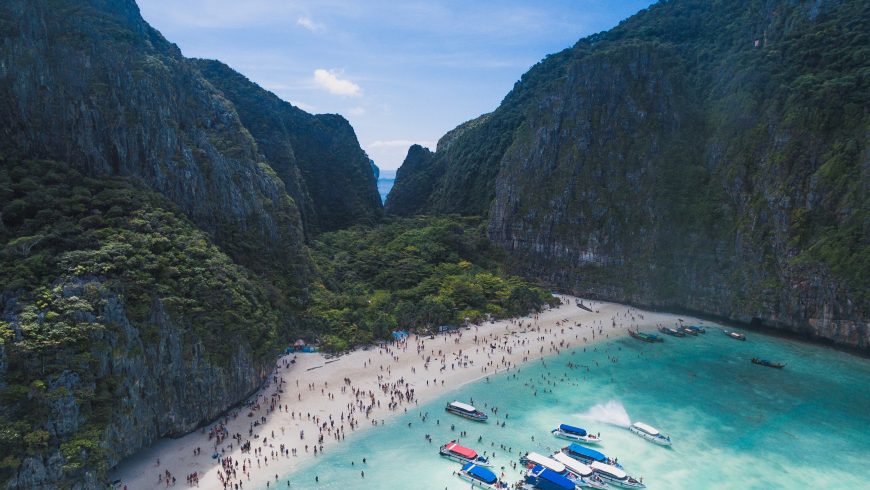
The increase in low-cost air flights and cruises is certainly one of the causes of Overtourism.
The numbers published by the World Tourism Organisation (Unwto) speak for themselves. Even in Italy , we have examples of how mass tourism damages the nature and residents of cities invaded by travelers. Venice , for example, is visited by about 20 million people a year. A number a little too high for such a delicate city, devastated also by cruise ships causing pollution .
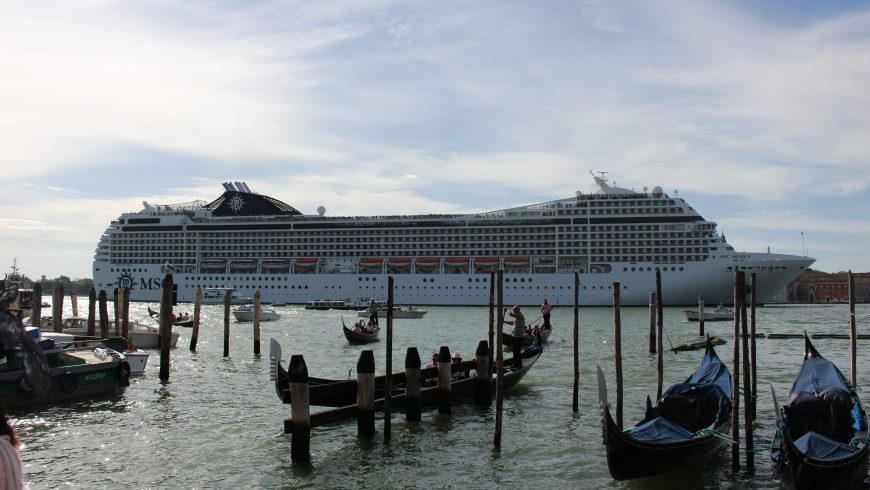
Even Florence , Capri and the Cinque Terre National Park in Liguria suffer from the excessive number of tourists arriving every year. This influx is leading the administrations of the various Italian municipalities to take steps to limit the number of revenues.
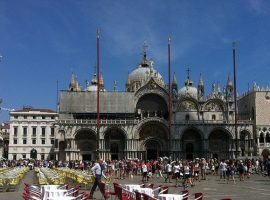
Consequences of overtourism
1 destruction of natural ecosystems.
The flora and fauna are usually the first to suffer overtourism in the most popular natural tourist destinations. In some natural destinations, environmental issues led to the destruction of entire ecosystems. Among these problems, we can mention deforestation, exploitation of the soil and pollution . But also, no policy of raising awareness and protecting natural environments. In some cases, this situation has no possibility of redemption, such as, for example, what happens to coral reefs around the world. As global warming and tourists irreparably ruined them, corals are part of a natural system that is becoming extinct.
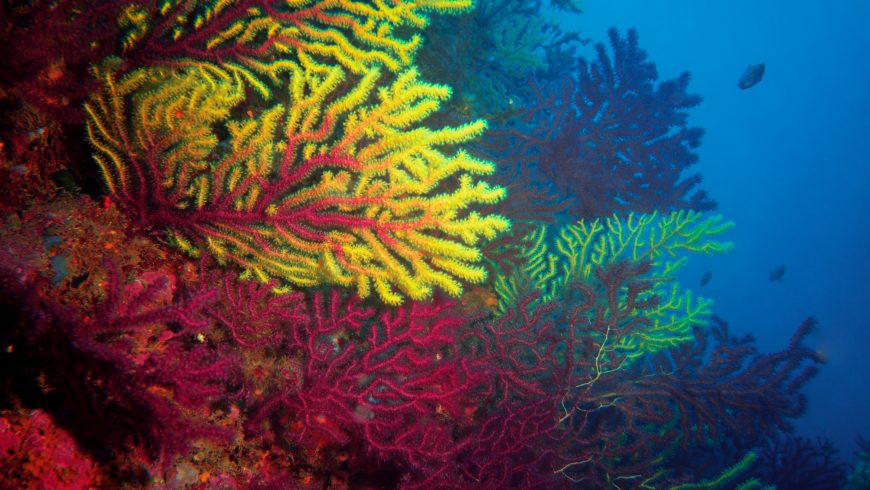
2. Increase in the amount of waste
Another consequence of mass tourism is the large accumulation of waste that people don’t differentiate. Inevitably, it creates a major environmental problem of disposal and pollution. Boracay Island , in the Philippines, has been closed to restore the ecosystem after years of uncontrolled tourism. The waste problem is also very important on the island of Bali , which is trying to combat it thanks to the thought of Zero waste Bali.
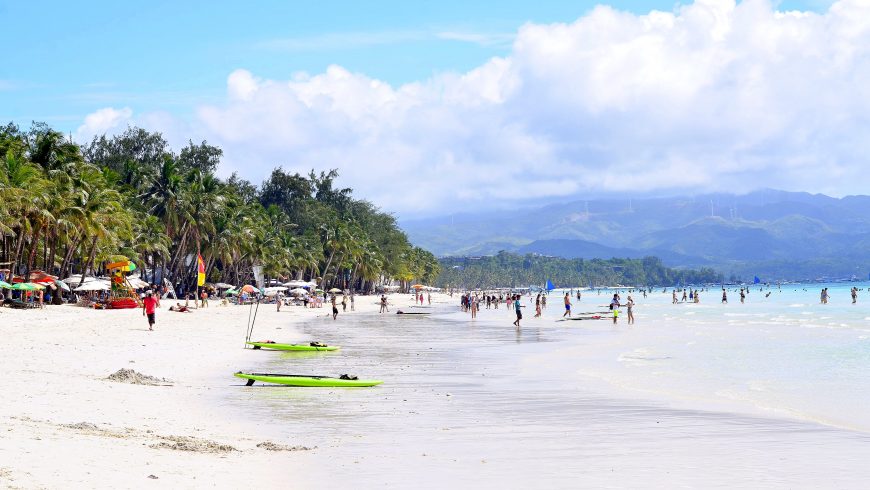
3. Escape and malaise of residents
Too much tourism affects mainly the locals. Across Europe, in cities like Barcelona or Venice, the phenomenon of overtourism has unleashed strong tensions from the inhabitants. Residents complain about the rising of housing prices and rentals. In effect, they inflated them due to the spread of online platforms such as Airbnb. But also, they talked about the disappearance of small shops, replaced by tourist shops, and the inviolability of their cities. The last consequence is the escape of residents from their cities, which have become tourist theatres, thus losing their authenticity.
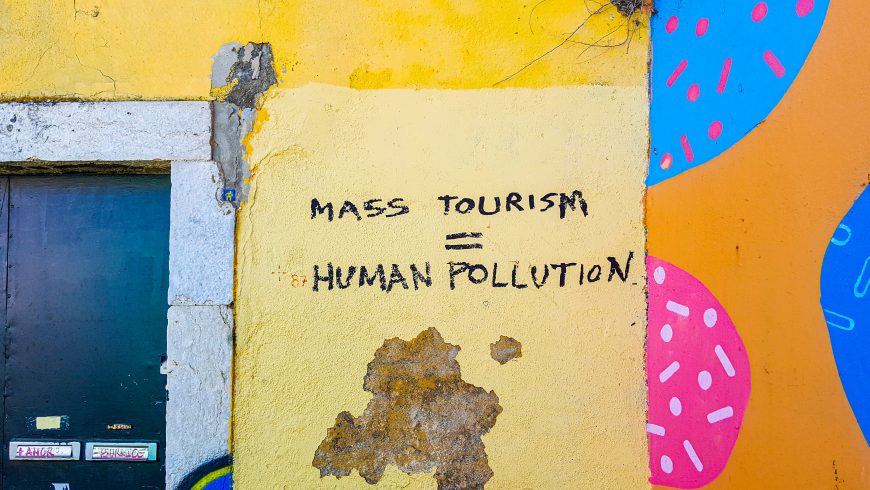
Solutions to overtourism for destinations
As tourist flows around the world increased, the World Tourism Organization (UNWTO) has dedicated an entire Report to overtourism. Certainly, there is not one single solution, but many small things that we can do during our holidays . The Report thus proposes 11 strategies and 68 measures to combat excessive tourism.
Here are the 11 suggestions that tourist destinations can follow to counter the phenomenon of overtourism.
- Encourage the dispersion of tourists within the city, and even beyond the territory, suggesting the visit of lesser-known destinations and less touristic areas.
- Promote tourism in different periods (for example out of season) and at different times from the most popular.
- Create new and different itineraries and tourist attractions.
- Review and improve regulations , such as closing some overcrowded areas to traffic.
- Attract more responsible types of travelers.
- ensure the benefits of tourism to local communities, for example by increasing the number of inhabitants employed in tourism, and by involving residents in the creation of tourism experiences.
- Develop and promote experiences in the city or territory that benefit both tourists and residents.
- Increase the infrastructure and services of the resort.
- Involve the local community in tourist decisions and choices.
- Educate travelers and tell them how to be more responsible and respectful of the place.
- Monitor and measure changes.
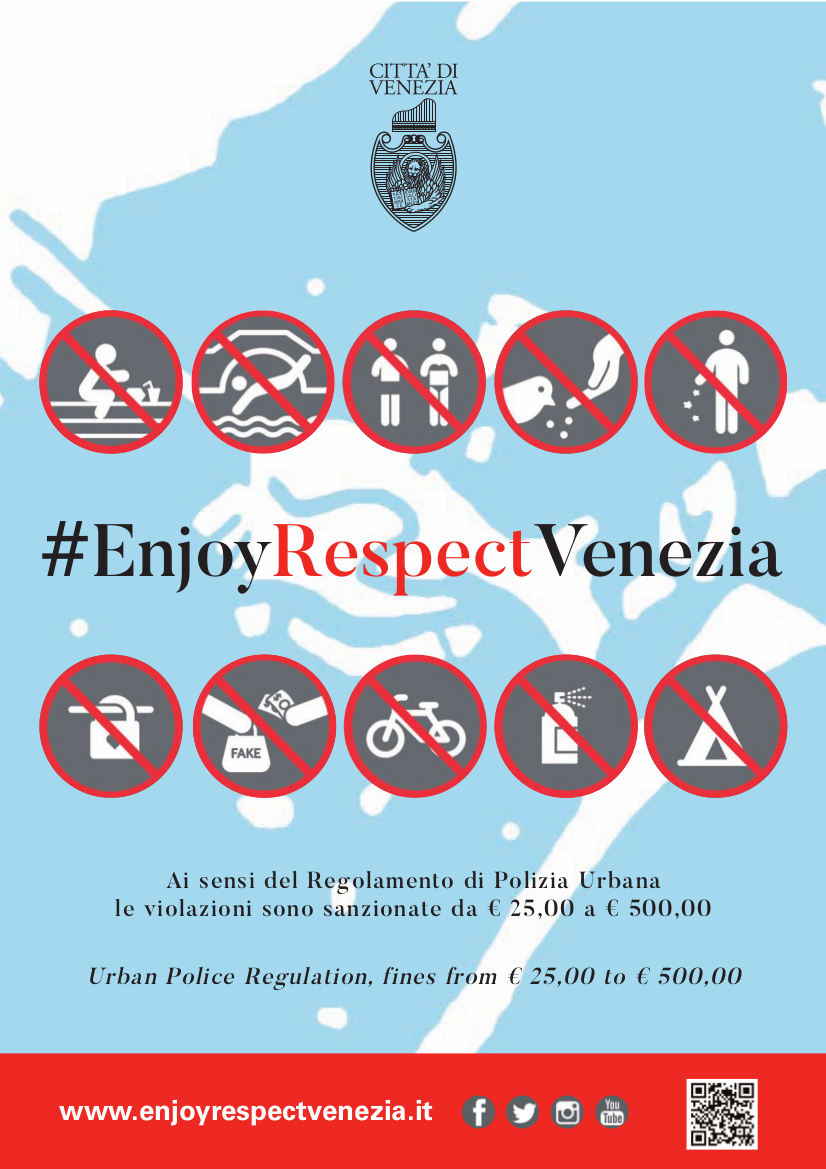
And what can we do?
With Ecobnb we promote responsible tourism , avoiding overcrowded famous destinations and promoting the close destinations. Often we don’t know what surrounds us and which beauties we can find without necessarily taking planes that emit huge amounts of CO2. Slow and sustainable tourism offers authentic locations. These places enrich local communities and those who invest in eco-sustainable activities. The real holiday could also be for you the relaxing and unplugging holiday. You could simply recharge the energies in contact with nature. Nonetheless, remember to try and lessen as much as possible for your environmental impact.
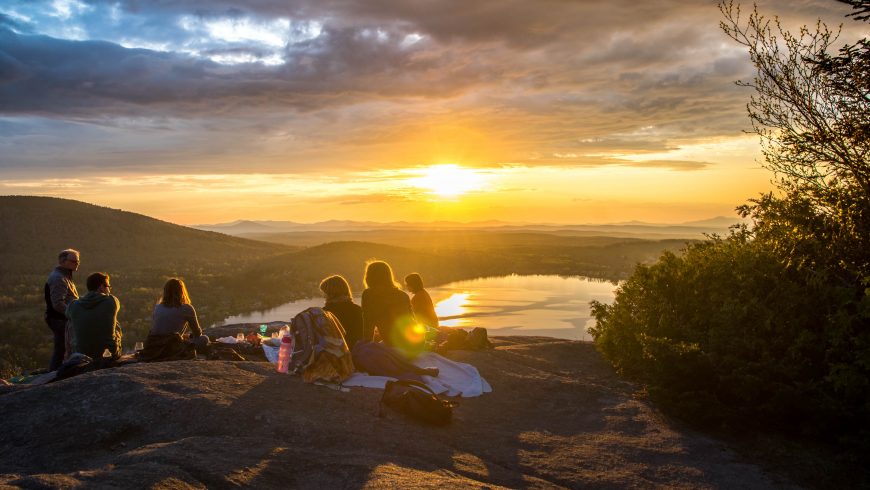
The good news is that each of us can do our part to counteract overtourism and promote sustainable tourism.
Here’s your vademecum
Here are 5 simple ideas , a vademecum, to promote quality tourism, instead of quantity, every time we travel.
- Avoid air flights and cruises, move by train and public transport whenever you can.
- Don’t take your decisions following the mass. If everyone goes to the mountains on August 15, why don’t you choose a different date?
- Organize your holidays in an alternative way, choose authentic and less touristy destinations .
- Travel out of season : spring and autumn are beautiful and less expensive seasons.
- Respect the places you visit (here you find 40 tips to travel green ), try to live like a local”, immerse yourself in the culture of the place and make friends with the inhabitants.
Cover image: photo by Elizeu Dias via Unsplash
You might also like
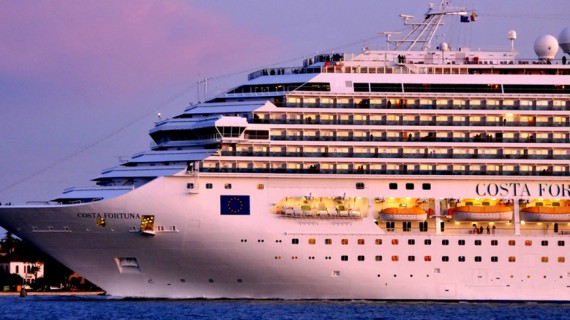
How do cruise ships impact on the environment
The cruise ship is the holiday that has grown faster than any other in the last 20 years. Despite the disaster of the Costa Concordia near the island of Giglio (Italy), cruises are becoming increasingly popular, coming to carry each year about 20 million passengers worldwide and 800,000 in Italy. But it is also the […]
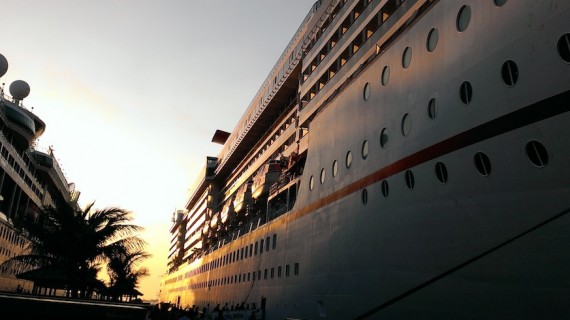
A Cruise Ship Pollutes as One Million Cars
Cruise ships are often associated with luxury and total relaxation, but in reality, they represent huge damage to the environment and the health of passengers and port cities. Cruise ships not only create significant environmental damage but are extremely harmful to health due to their exhaust gases. This is what emerges from the 2016 Environmental […]

Save our cities from overtourism!
SET (Sud-Europe facing Overtourism): a network created by 15 European cities to denounce the destructive effects of mass tourism and promote the research for a new touristic system. Mass tourism brings enormous amounts of tourists in the main cities. The effects of the so-called overtourism are indeed severe. Cities lost their original artistic, natural and cultural heritage: […]

Pacific Islands: the Paradises ruined by ‘Overtourism’
‘Overtourism’: too much mass tourism threatens fragile ecosystems, such as the Pacific Islands. Philippines, Indonesia, and Thailand the most affected countries. Strategies to preserve destinations and promote responsible tourism are essential Admiring the photos of the dream beaches of some islands of Polynesia or the Philippines is not surprising if in the last few years […]
The drive to turn tourism from a prime threat to saviour of global biodiversity
- Medium Text
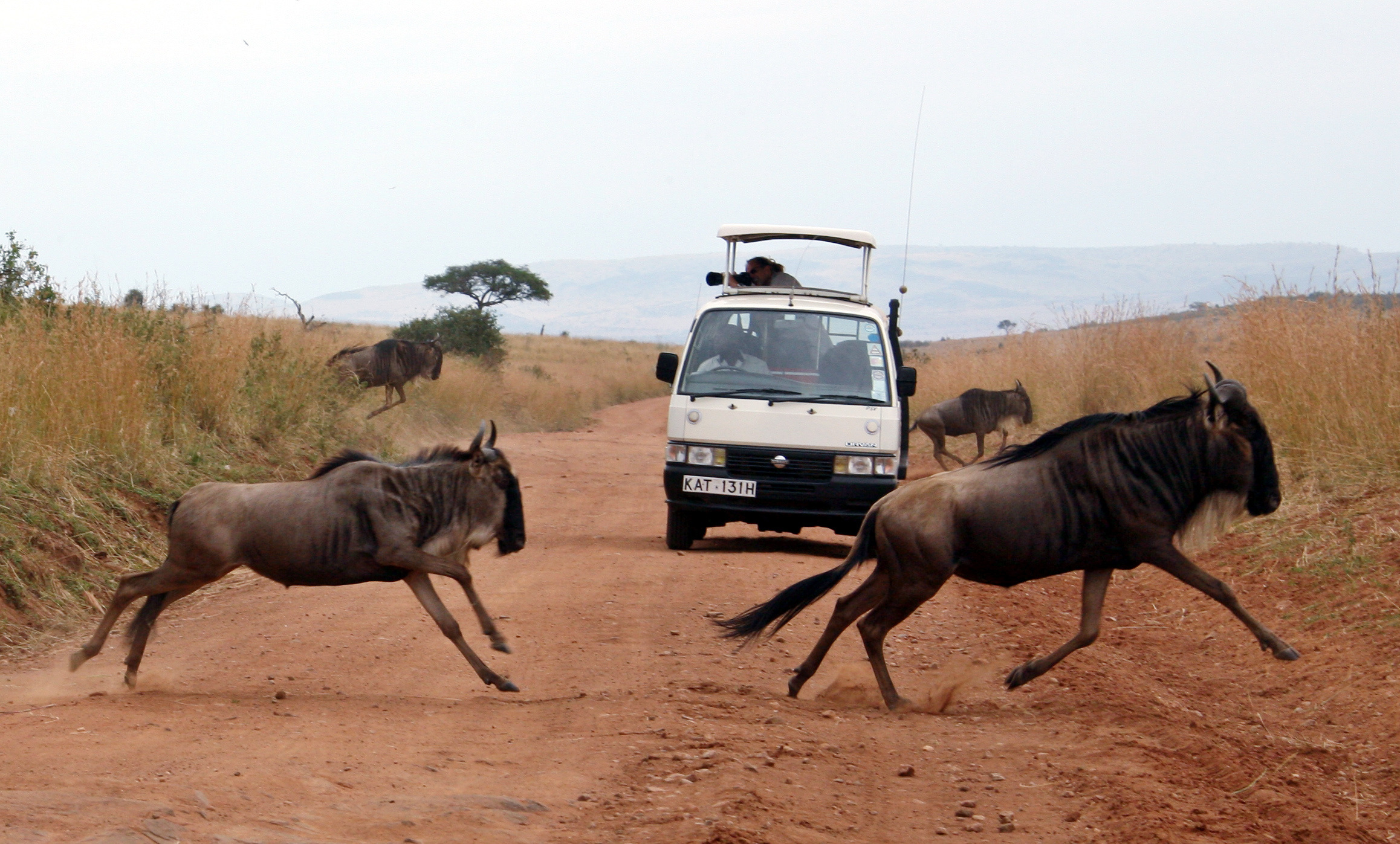
- Surveys suggest travellers want a more sustainable approach to tourism
- Biodiversity initiatives such as 30x30 could lead to tangible economic gains
- Protected habitats generated over $600 billion in 2015, but just 2% of that was invested in preservation
- Communities have vital role to play in nature conservancy when tourism profits are filtered through

Angeli Mehta writes the Policy Watch column for Ethical Corporation, Thomson Reuters' sustainable business magazine. She is a science writer with a particular interest in the environment and sustainability. Previously, she produced programmes for BBC Current Affairs and has a research PHD. @AngeliMehta
Read Next / Editor's Picks

UN Tourism | Bringing the world closer
Transforming tourism for climate action, sustainable development.
- Biodiversity
Climate Action
- Global Tourism Plastics Initiative
- Hotel Energy Solutions (HES)
- Resource Efficiency in Tourism
- Small Islands Developing States (SIDS)
- Travel facilitation
- UNGA Sustainable Tourism Resolutions
share this content
- Share this article on facebook
- Share this article on twitter
- Share this article on linkedin
Find out about the Glasgow Declaration
The tourism sector is highly vulnerable to climate change and at the same time contributes to the emission of greenhouse gases (GHG), which cause global warming. Accelerating climate action in tourism is therefore of utmost importance for the resilience of the sector. Climate action is understood as the efforts to measure and reduce GHG emissions and strengthen adaptive capacity to climate induced impacts. 1
There is a growing consensus among tourism stakeholders as to how the future resilience of tourism will depend on the sector’s ability to embrace a low carbon pathway and cut emissions by 50% by 2030
According to UN Tourism/ITF latest research , released in December 2019 at UNFCCC COP25, CO 2 emissions from tourism are forecasted to increase by 25% by 2030 from 2016 levels, against the current ambition scenario. The report provides insights into the evolution of tourism demand across the different global regions from 2016 to 2030 and presents transport-related CO2 emissions for the period. In 2016, transport-related emissions from tourism contributed to 5% of all man-made emissions and were set to increase to 5,3% by 2030 against a current ambition scenario.
Find Transport-related CO 2 Emissions of the Tourism Sector - Modelling
Therefore, the need to scale up climate action in tourism is of utmost importance, especially even more now that the sector has recovered from the COVID-19 pandemic, with 2023 reaching 88% levels of the international tourist arrivals in 2019. The cost of inaction with regards to climate will be in the long run larger than the cost of any other crisis.
UN Tourism is committed to accelerate progress towards low carbon tourism development and the contribution of the sector to international climate goals by:
- Strengthening the measurement and disclosure of CO 2 emissions in tourism
- Accelerating the decarbonization of tourism operations
- Engaging the tourism sector in adaptation and carbon removal
In order to support the tourism stakeholders to advance on measuring their GHG emissions, in March 2023, UN Tourism published the report on CLIMATE ACTION IN TOURISM SECTOR: AN OVERVIEW OF METHODOLOGIES AND TOOLS TO MEASURE GREENHOUSE GAS EMISSIONS . The report was developed with support from the Federal Ministry for the Environment, Nature Conservation, Nuclear Safety and Consumer Protection of Germany (BMU) and released in collaboration with UN Climate Change (UNFCCC). Read the full report here .

In order to support National Tourism Administrations, in March 2024 UN Tourism launched the Policy Guidance with support from the UN Climate Change (UNFCCC) and technical support from the United Nations Environment Programme (UNEP). The Policy Guidance has been developed to assist governmental agencies dedicated to tourism in the development of tourism climate action policies and initiatives to support the low-carbon transition for tourism. This policy guidance provides examples of good practice from around the world to illustrate how NTAs can implement climate-enabling policy and other initiatives as well as benefit from climate initiatives in other sectors. The policy guidance is complemented by a Glasgow Declaration signatory Pack for NTAs which provides practical recommendations on how to get started with climate action.

RELATED ACTIVITIES
The glasgow declaration: a commitment to a decade of climate action in tourism.
The Glasgow Declaration aims to act as a catalyst for increased urgency about the need to accelerate climate action in tourism and to secure strong actions and commitment.
The signatories of the Glasgow Declaration on Climate Action in Tourism are committing to act now and accelerate climate action to support the global goals of cutting emissions by at least a half over the next decade and reach Net Zero emissions as soon as possible before 2050. Signatories of the Glasgow Declaration are developing climate plans aligned with 5 pathways : measure, decarbonize, regenerate, collaborate, finance, and reporting progress on an annual basis.
UN Tourism outlined the collective progress with the first Glasgow Declaration Implementation Report (2023) .The Glasgow Declaration on Climate Action in Tourism Implementation Report 2023 presents the results of a systematic review of all progress updates received from signatories during the first reporting exercise conducted between January and June 2023 (over 400 updates), which in many cases include the submission of a Climate Action Plan. The report represents a first-of-its-kind picture of the rapidly developing engagement of the tourism sector with the challenges of climate action.

Please visit the One Planet network website to learn more about:
Participation at UN Climate Change Conferences of the Parties (COP)
Since 2019, COP25, UN Tourism has been participating on an annual basis to the Conference of the Parties of the UN Framework Convention on Climate Change to position the important role that the tourism sector can play to support international climate goals.

Glasgow Declaration on Climate Action in Tourism
Related links
- Access UN Tourism/ITF research on transport-related CO2 emissions from tourism
- Access additional information on the official side-event at COP25
- Watch the Climate Panel from the 23rd UN Tourism General Assembly
- Download the report “Climate Change and Tourism – Responding to Global Challenges"
- Global Survey of Climate Action in Tourism
Tourism Stakeholders Invited to Share Progress on Climate Action
- The Road to Climate Neutrality: Experiences, Challenges and Support for the Caribbean tourism sector
Sustainability on the Frontline of Online Education
Un tourism commits to the antigua and barbuda agenda for small island developing states (sids), glasgow declaration - global roundtable for tourism climate action, glasgow declaration - regenerative tourism for resilience: policy, practice and finance.

Tourism at COP28 – Delivering on the Climate Action Commitments of the Glasgow Declaration

UN Tourism Welcomes Mexican States to Glasgow Declaration on Climate Action in Tourism

New Report to Support Climate Action in the Tourism Sector

UN Tourism at COP27: Uniting Tourism Around Tangible Climate Action Plans

Glasgow Declaration on Climate Action in Tourism Surpasses 500 Signatories

Tourism unites behind the Glasgow Declaration on Climate Action at COP26

Launch of the Glasgow Declaration: A commitment to a decade of climate action in tourism

The Glasgow Declaration: An urgent global call for commitment to a decade of climate action in tourism

Tourism’s Carbon Emissions Measured in Landmark Report Launched At COP25
1. View Goal 13 Targets 2 Carbon Brief 3. Cut Global Emissions by 7.6 Percent Every Year for Next Decade to Meet 1.5°C Paris Target - UN Report
Number of tourist arrivals
Somewhere on Earth this year
The World Counts • Impact through Awareness
The world counts impact through awareness, 45 arrivals every second.
There are over 1.4 billion tourists arriving at their destination every year. That’s 45 arrivals every single second.
Exponential growth of tourism
In 1950 there were 25 million international tourist arrivals, in 1970 the number was 166 million, and by 1990 it had grown to 435 million. From 1990 to 2018 numbers more than tripled reaching 1.442 billion. By 2030, 1.8 billion tourist arrivals are projected.
Negative environmental impacts of tourism
The negative environmental impacts of tourism are substantial. They include the depletion of local natural resources as well as pollution and waste problems. Tourism often puts pressure on natural resources through over-consumption, often in places where resources are already scarce.
Tourism puts enormous stress on local land use, and can lead to soil erosion, increased pollution, natural habitat loss, and more pressure on endangered species. These effects can gradually destroy the environmental resources on which tourism itself depends.

Tourism often leads to overuse of water
An average golf course in a tropical country, for example, uses as much water as 60,000 rural villagers. It also uses 1500 kilos of chemical fertilizers, pesticides and herbicides per year.
Tourism and climate change
Tourism contributes to more than 5 percent of global greenhouse gas emissions, with transportation accounting for 90 percent of this.
By 2030, a 25% increase in CO2-emissions from tourism compared to 2016 is expected. From 1,597 million tons to 1,998 million tons.
1,101,463,991
Tons of waste dumped
Globally, this year
2,171,754.47
Square kilometers of land area being degraded
2,213,318,846,717
Tons of freshwater used
Worldwide, this year
22,392,968,159
Tons of CO2 emitted into the atmosphere
The alternative: Eco-tourism
Eco-tourism offers a greener alternative. Eco-tourism is a rapidly growing industry, with potential benefits for both the environment and the economies of the tourist destinations.
Number of eco-tourist arrivals

- World Population
- The Consumer Economy
- Our Global Challenges
- The Project
- Keep the optimism
- Support green companies

Is it possible to be a ‘sustainable tourist’? 12 ways to make a positive impact on your travels
Facebook Twitter Print Email
After a period of plummeting tourism numbers during the pandemic, tourism is having a resurgence. This is good news for many workers and businesses, but it could be bad for the planet. Here is a selection of ways tourists can ensure that their holidays don’t harm the environment.
There are many positive aspects to tourism. Around two billion people travel each year for tourism purposes. Travel and tourism connect people and bring the world closer through shared experiences, cultural awareness and community building. It provides jobs, spurs regional development, and is a key driver for socio-economic progress.
However, there is often a downside; Many popular destinations are threatened by increasing pollution, environmental hazards, damage to heritage sites and overuse of resources. And that’s without factoring the pollution caused by travel to and from these destinations.
So, with that in mind here are some tips that will help you to enjoy your trip, and leave with the confidence that your favoured tourist destination will not be damaged by your presence, once you return home.
1. Ditch single-use plastics
Often used for less than 15 minutes, single-use plastic items can take more than 1,000 years to degrade. Many of us are switching to sustainable options in our daily lives, and we can take the same attitude when we’re on the road. By choosing reusable bottles and bags wherever you go, you can help ensure there is less plastic waste in the ocean and other habitats.
2. Be ‘water wise’
On the whole, tourists use far more water than local residents. With a growing number of places experiencing water scarcity, the choices you make can help ensure people have adequate access to water in the future. By foregoing a daily change of sheets and towels during hotel stays, we can save millions of litres of water each year.
3. Buy local
When you buy local, you help boost the local economy, benefit local communities, and help to reduce the destination’s carbon footprint from transporting the goods. This is also true at mealtimes, so enjoy fresh, locally grown produce every chance you get.
4. Use an ethical operator
Tour operations involve people, logistics, vendors, transportation and much more. Each link in the chain can impact the environment - positively or negatively. If you prefer to leave the planning to someone else, be sure to pick an operator that prioritizes the environment, uses resources efficiently and respects local culture.

5. ‘Please don’t feed the animals’
Sharing food with wildlife or getting close enough to do so increases the chances of spreading diseases like cold, flu and pneumonia from humans to animals. Also, when animals get used to receiving food from humans, their natural behaviours are altered, and they become dependent on people for survival. In some cases, it can also lead to human-animal conflict.
6. And don’t eat them either!
By creating the demand, consuming endangered or exotic animals leads to an increase in poaching, trafficking and exploitation of animals. Besides the harm done to the individual animal on your plate, irresponsible dining can contribute to the extinction of species already threatened by climate change and habitat loss. Keep this in mind when shopping for souvenirs as well, and steer clear of products made from endangered wildlife.
7. Share a ride
Transportation is a major contributor to the carbon footprint from tourism. Instead of private taxis, explore using public transportation like trains, buses and shared cabs. You can also ride a bicycle, which offers a convenient and cheaper way to explore and learn about a place.
8. Consider a homestay
Staying with a local resident or family is a nature-friendly option that allows you to get up close and personal with local culture and customs. Staying at local homestays can uplift communities by providing income while giving you a peek into different ways of life.

9. Do your homework
Before your travel, educate yourself about your destination. Doing so will allow you to better immerse yourself in local traditions and practices and appreciate things that might have gone unnoticed otherwise. With the right information, you can explore a destination in a more sensitive manner and surprise yourself with new adventures and discoveries.
10. Visit national parks and sanctuaries
Exploring nature and wildlife through national parks is an intimate way to learn about the animals and their ecosystems first hand. In some cases, your entrance fee supports conservation efforts that protect species and landscapes and preserve these natural spaces for future visitors to enjoy.
11. Don’t leave a trace
You can make a mark by not leaving a mark on your vacation destination. Put garbage in its place to avoid litter, and don’t remove or alter anything without permission. Let’s make sure we leave only soft footprints, and not the environmental kind.
12. Tell your friends
Now that you’re ready to travel in eco-friendly style, it’s time spread the word! Inform fellow travellers, friends and family about how sustainable tourism benefits local people by enhancing their livelihoods and well-being, and helps all of us by safeguarding our beautiful environment.
Advertisement
Impact of tourism development upon environmental sustainability: a suggested framework for sustainable ecotourism
- Research Article
- Published: 19 August 2022
- Volume 30 , pages 5917–5930, ( 2023 )
Cite this article

- Qadar Bakhsh Baloch 1 ,
- Syed Naseeb Shah 1 ,
- Nadeem Iqbal 2 ,
- Muhammad Sheeraz 3 ,
- Muhammad Asadullah 4 ,
- Sourath Mahar 5 &
- Asia Umar Khan 6
62k Accesses
109 Citations
6 Altmetric
Explore all metrics
The empirical research investigated the relationship between tourism development and environmental suitability to propose a framework for sustainable ecotourism. The framework suggested a balance between business and environmental interests in maintaining an ecological system with the moderating help of government support and policy interventions. The study population encompasses tourism stakeholders, including tourists, representatives from local communities, members of civil administration, hoteliers, and tour operators serving the areas. A total of 650 questionnaires were distributed to respondents, along with a brief description of key study variables to develop a better understanding. After verifying the instrument’s reliability and validity, data analysis was conducted via hierarchical regression. The study findings revealed that a substantial number of people perceive socio-economic benefits, including employment and business openings, infrastructure development from tourism development, and growth. However, the state of the natural and environmental capital was found to be gradually degrading. Alongside the social environment, social vulnerability is reported due to the overutilization of land, intrusion from external cultures, and pollution in air and water due to traffic congestion, accumulation of solid waste, sewage, and carbon emissions. The study suggested a model framework for the development of sustained ecotourism, including supportive government policy interventions to ensure effective conservation of environmental and natural resources without compromising the economic viability and social well-beings of the locals. Furthermore, the variables and the constructs researched can be replicated to other destinations to seek valuable inputs for sustainable destination management elsewhere.
Similar content being viewed by others
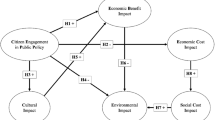
Balancing tourism and conservation: analysing the sustainability of tourism in the city of Naples through citizen perspectives

Sustainable Tourism Indicators in Cities

Ecotourism as a Core of Sustainability in Tourism
Explore related subjects.
- Environmental Chemistry
Avoid common mistakes on your manuscript.
Introduction
Tourism is a vibrant force that stimulates travel to explore nature, adventures, wonders, and societies, discover cultures, meet people, interact with values, and experience new traditions and events. Tourism development attracts tourists to a particular destination to develop and sustain a tourism industry. Moreover, environmental sustainability is the future-based conscious effort aimed at conserving socio-cultural heritage and preserving natural resources to protect environmental ecosystems through supporting people’s health and economic well-being. Environment sustainability can be reflected in clean and green natural landscaping, thriving biodiversity, virgin sea beaches, long stretches of desert steppes, socio-cultural values, and archeological heritage that epitomize tourists’ degree of motivation and willingness of the local community to welcome the visitors. In this context, tourism growth and environmental sustainability are considered interdependent constructs; therefore, the increase in tourism development and tourists’ arrivals directly affects the quality of sustained and green tourism (Azam et al. 2018 ; Hassan et al. 2020 ; Sun et al. 2021 ).
According to the World Tourism Organization (UNWTO), tourism is one of the fastest-growing industries, contributing more than 10% to the global GDP (UNWTO 2017; Mikayilov et al. 2019 ). Twenty-five million international tourists in 1950 grew to 166 million in 1970, reaching 1.442 billion in 2018 and projected to be 1.8 billion by 2030. Mobilizing such a substantial human tourist’s mass is most likely to trickle environmental pollution along with its positive effects on employment, wealth creation, and the economy. The local pollution at tourist destinations may include air emissions, noise, solid waste, littering, sewage, oil and chemicals, architectural/visual pollution, heating, car use, and many more. In addition, an uncontrolled, overcrowded, and ill-planned tourist population has substantial adverse effects on the quality of the environment. It results in the over-consumption of natural resources, degradation of service quality, and an exponential increase in wastage and pollution. Furthermore, tourism arrivals beyond capacity bring problems rather than a blessing, such as leaving behind soil erosion, attrition of natural resources, accumulation of waste and air pollution, and endangering biodiversity, decomposition of socio-cultural habitats, and virginity of land and sea (Kostić et al. 2016 ; Shaheen et al. 2019 ; Andlib and Salcedo-Castro 2021 ).
Tourism growth and environmental pollution have been witnessed around the globe in different regions. The ASEAN countries referred to as heaven for air pollution, climate change, and global warming are experiencing economic tourism and pollution (Azam et al. 2018 ; Guzel and Okumus 2020 ). In China, more than fifty-eight major Chinese tourism destinations are inviting immediate policy measures to mitigate air pollution and improve environmental sustainability (Zhang et al. 2020 ). Similarly, Singapore, being a top-visited country, is facing negative ecological footprints and calling for a trade-off between tourism development and environmental sustainability (Khoi et al. 2021 ). The prior studies established that international tourism and the tourism-led growth surge tourists’ arrival, energy consumption, carbon dioxide (CO 2 ) emissions, and air pollution resultantly cause climate change (Aslan et al. 2021 ). South Asian countries, more specifically Sri Lanka and Pakistan, are on the verge of tourism growth and environmental pollution compared to other countries (Chishti et al. 2020 ; Tiwari et al. 2021 ).
Pakistan is acknowledged in the tourism world because of its magnificent mountains with the densest concentration of high peaks in the world, scenic beauty of Neelum Valley, Murree, Chitral, and swat Valleys’, Kaghan, Naran, Hunza, Gilgit Baltistan (Baloch 2007 ), sacred shrines of Sikhism, archeological sites of the Gandhara and Indus Valley civilizations such as Mohenjo-Daro, Taxila including pre-Islamic Kalasha community (Baloch and Rehman 2015 ). In addition, Pakistan’s hospitable and multicultural society offers rich traditions, customs, and festivals for the tourists to explore, commemorate, cherish, and enjoy. Pakistan’s geographical and socio-cultural environment represents its resource and an opportunity (Baloch and Rehman 2015 ); therefore, Pakistan is looking to capitalize on it as a promising source of the foreign reserve to compensate for its mounting trade deficit (Baloch et al. 2020 ).
Tourism expansion has been established as a very deleterious ecological cost vis-à-vis the socio-economic benefits it passes to the host communities (Pulido-Fernández et al. 2019 ; Simo-Kengne 2022 ). In this context, the research is motivated to investigate the relationships between Pakistan’s tourism development activities and environmental sustainability. Drawing from the arguments of Pulido-Fernández et al. ( 2019 ) and Simo-Kengne ( 2022 ), it is feared that Pakistan’s ongoing determination to tourism development is likely to cause environmental degradation in two ways. Firstly, the tourism infrastructure developmental process would consume natural resources in the form of air and water pollution, loss of nature, and biodiversity. Secondly, the proliferation of tourism-related energy-consuming activities harms the environment by adding CO 2 emissions (Andlib and Saceldo-Castro 2021 ; Chien et al. 2021a ). Therefore, to tape this tourism-rich potential without compromising the sustainability of the natural and socio-cultural environment in the area, there is a dire need to develop Pakistan’s tourism areas into environment-friendly destinations.
Against the backdrop of a widening level of trade deficit, Pakistan’s rich tourism potential is being perceived as an immediate alternative for earning revenue to compensate for the current account gap. However, the developing large-scale tourism industry is considered a threat to deforestation, and air and water pollution, endangering biodiversity trading on resilient ecological credentials. The research study attempts to find an all-inclusive and comprehensive answer to the socio-ecological environmental concerns of tourism development and growth. Therefore, the research investigates the relationship between tourism development and its environmental sustainability to suggest a model framework for the development and growth of Sustainable Ecotourism in Pakistan along with its most visited destinations.
Literature review
- Tourism development and growth
Tourism is considered a force of sound as it benefits travelers and communities in urban and suburban areas. Tourism development is the process of forming and sustaining a business for a particular or mix of segments of tourists’ as per their motivation in a particular area or at a specific destination. Primarily, tourism development refers to the all-encompassing process of planning, pursuing, and executing strategies to establish, develop, promote, and encourage tourism in a particular area or destination (Mandić et al. 2018 ; Ratnasari et al. 2020 ). A tourism destination may serve as a single motivation for a group of tourists or a mix of purposes, i.e., natural tourism, socio-cultural or religious tourism, adventure or business tourism, or a combination of two or more. Andlib and Salcedo-Castro ( 2021 ), drawing from an analysis approach, contended that tourism destinations in Pakistan offer a mix of promising and negative consequences concerning their socio-economic and environmental impressions on the host community. The promising socio-economic impacts for the local community are perceived in the form of employment and business opportunities, improved standard of living, and infrastructural development in the area. The adverse environmental outcomes include overcrowding, traffic congestion, air and noise pollution, environmental degradation, and encroachment of landscaping for the local community and the tourists. An extensive review of the literature exercise suggests the following benefits that the local community and the tourists accrue from the tour are as follows:
Generate revenue and monetary support for people and the community through local arts and culture commercialization.
Improve local resource infrastructure and quality of life, including employment generation and access to improved civic facilities.
Help to create awareness and understanding of different ethnic cultures, social values, and traditions, connecting them and preserving cultures.
Rehabilitate and conserve socio-cultural and historical heritage, including archeological and natural sites.
Establishment of natural parks, protracted areas, and scenic beauty spots.
Conservation of nature, biodiversity, and endangered species with control over animal poaching.
Improved water and air quality through afforestation, littering control, land and soil conservation, and recycling of used water and waste.
Tourism and hospitality business incorporates various business activities such as travel and transportation through the air or other modes of travel, lodging, messing, restaurants, and tourism destinations (Szpilko 2017 ; Bakhriddinovna and Qizi 2020 ). A tourist’s tourism experience is aimed at leisure, experiencing adventure, learning the culture or history of a particular area or ethnic entity, traveling for business or health, education, or religious purposes. The chain of activities adds value to the Tourism experience. Every activity contributes toward economic stimulation, job creation, revenue generation, and tourism development encompassing infrastructure for all activities involved in the tourism process. Tourism growth expresses the number of arrivals and the time of their stay/trips over a period of time. Tourism growth is measured through the interplay between tourists’ arrivals, tourism receipts, and travel time duration (Song et al. 2010 ; Arifin et al. 2019 ). The following factors drive the degree and level of tourism development and growth:
Environmental factors include scenic beauty, green spaces, snowy mountains, towering peaks, good climate and weather, the interconnectivity of destination, quality of infrastructure, etc.
Socio-economic factors: the distinctiveness of community, uniqueness of culture and social values, hospitality and adaptability, accessibility, accommodation, facilities and amenities, cost-effectiveness, price index, and enabling business environment.
Historical, cultural, and religious factors include historical and cultural heritage, religious sites, and cultural values and experiences.
The tourism development process and its different dynamics revolve around the nature of tourism planned for a particular destination or area, which can be specified as ecotourism, sustainable tourism, green tourism or regenerative tourism, etc. Ecotourism is “responsible travel to natural areas that conserves the environment, sustains the well-being of the local people, and involves interpretation and education” (Cheia, 2013 ; TIES, 2015). According to the World Conservation Union (IUCN), ecotourism involves “ Environmentally responsible travel to natural areas, to enjoy and appreciate nature (and accompanying cultural features, both past, and present) that promote conservation, have a low visitor impact and provide for beneficially active socio-economic involvement of local peoples ”. Moreover, Blangy and Wood ( 1993 ) defined it as “ responsible travel to natural areas that conserves the environment and sustains the well-being of local people ” (p. 32). The concept of ecotourism is grounded upon a well-defined set of principles including “environmental conservation and education, cultural preservation and experience, and economic benefits” (Cobbinah 2015 ; De Grosbois and Fennell 2021 ).
Ecotourism minimizes tourism’s impact on the tourism resources of a specific destination, including lessening physical, social, interactive, and psychosomatic impacts. Ecotourism is also about demonstrating a positive and responsible attitude from the tourists and hosts toward protecting and preserving all components of the environmental ecosystem. Ecotourism reflects a purpose-oriented mindset, responsible for creating and delivering value for the destination with a high degree of kindliness for local environmental, political, or social issues. Ecotourism generally differs from mass tourism because of its following features (Liang et al. 2018 ; Ding and Cao 2019 ; Confente and Scarpi 2021 ):
Conscientious behavior focuses on the low impact on the environment.
Sensitivity and warmth for local cultures, values, and biodiversity.
Supporting the sustenance of efforts for the conservation of local resources.
Sharing and delivering tourism benefits to the local communities.
Local participation as a tourism stakeholder in the decision-making process.
Educating the tourist and locals about the sensitivity and care of the environment because tourism without proper arrangement can endanger the ecosystems and indigenous cultures and lead to significant ecological degradation.
Sustainability aims to recognize all impacts of tourism, minimize the adverse impacts, and maximize the encouraging ones. Sustainable tourism involves sustainable practices to maintain viable support for the ecology of the tourism environment in and around the destination. Sustainable tourism is natural resource-based tourism that resembles ecotourism and focuses on creating travel openings with marginal impact and encouraging learning about nature having a low impact, conservation, and valuable consideration for the local community’s well-being (Fennell 2001 & 2020 ; Butowski 2021 ). On the other hand, ecotourism inspires tourists to learn and care about the environment and effectively participate in the conservation of nature and cultural activities. Therefore, ecotourism is inclusive of sustainable tourism, whereas the focus of sustainable tourism includes the following responsibilities:
Caring, protecting, and conserving the environment, natural capital, biodiversity, and wildlife.
Delivering socio-economic welfare for the people living in and around tourists' destinations.
Identifying, rehabilitating, conserving, and promoting cultural and historical heritage for visitors learning experiences.
Bringing tourists and local groups together for shared benefits.
Creating wide-ranging and reachable opportunities for tourists.
Environment and sustainability of ecosystem
The term “environment” is all-inclusive of all the natural, organic living, inorganic, and non-natural things. The environment also denotes the interface among all breathing species with the natural resources and other constituents of the environment. Humans’ activities are mainly responsible for environmental damage as people and nations have contemplated modifying the environment to suit their expediencies. Deforestation, overpopulation, exhaustion of natural capital, and accumulation of solid waste and sewage are the major human activities that result in polluted air and water, acid rain, amplified carbon dioxide levels, depletion of the ozone, climate change, global warming, extermination of species, etc. A clean, green, and hygienic fit environment has clean air, clean water, clean energy, and moderate temperature for the healthy living of humans, animals, and biodiversity as nature is destined for them by their creatures. Maintaining and sustaining a clean environment is indispensable for human and biodiversity existence, fostering growth and development for conducting business and creating wealth. The environment can be sustained through conservation, preservation, and appropriate management to provide clean air, water, and food safe from toxic contamination, waste, and sewage disposal, saving endangered species and land conservation.
The globalization process, known for building socio-economic partnerships across countries, is also charged with encouraging environmental degradation through the over-consumption of natural resources and energy consumption, deforestation, land erosion, and weakening (Adebayo and Kirikkaleli 2021 ; Sun et al. 2021 ). Chien et al. ( 2021b ), while studying the causality of environmental degradation in Pakistan, empirically confirmed the existence of a significant connection between CO 2 emissions and GDP growth, renewable energy, technological innovation, and globalization. However, Chien et al. ( 2021a ) suggested using solar energy as a source of economic intervention to control CO 2 emissions and improve environmental quality in China. The danger of air pollution is hard to escape as microscopic air pollutants pierce through the human respiratory and cardiovascular system, injuring the lungs, heart, and brain. Ill-planned and uncontrolled human activities negatively affect ecosystems, causing climate change, ocean acidification, melting glaciers, habitation loss, eutrophication, air pollution, contaminants, and extinction of endangered species ( Albrich et al. 2020 ) .
Humans have a more significant effect on their physical environment in numerous ways, such as pollution, contamination, overpopulation, deforestation, burning fossil fuels and driving to soil erosion, polluting air and water quality, climate change, etc. UNO Agenda for 2030 “Sustainable Development and its Sustainable Development Goals” (SDGs) mirrors the common premise that a healthy environment and human health are interlaced as integral to the satisfaction of fundamental human rights, i.e., right to life, well-being, food, water and sanitation, quality of life and biodiversity to ensure healthy lives and promote well-being for all at all ages (SDG3)—which includes air quality that is dependent upon terrestrial ecosystems (SDG15), oceans (SDG14), cities (SDG11), water, cleanliness, and hygiene (SDG6) (Swain 2018 ; Opoku 2019 ; Scharlemann et al. 2020 ). The UNEP stated that 58% of diarrhea cases in developing economies is due to the non-provision of clean water and inadequate sanitation facilities resulting in 3.5 million deaths globally (Desai 2016 ; Ekins and Gupta 2019 ).
Climate change overwhelmingly alters ecosystems’ ability to moderate life-threatening happenings, such as maintaining water quality, regulating water flows, unbalancing the temporal weather and maintaining glaciers, displacing or extinction biodiversity, wildfire, and drought (Zhu et al. 2019 ; Marengo et al. 2021 ). Research studies advocate that exposure to natural environments is correlated with mental health, and proximity to green space is associated with lowering stress and minimizing depression and anxiety (Noordzij et al. 2020 ; Slater et al. 2020 ; Callaghan et al. 2021 ). Furthermore, the Ecosystem is affected by pollution, over-exploitation of natural resources, climate change, invasive and displacing species, etc. Hence, providing clean air and water, hygienic places, and green spaces enriches the quality of life: condensed mortality, healthier value-added productivity, and is vital to maintaining mental health. On the other hand, climate change aggravates environment-related health hazards through adverse deviations to terrestrial ecology, oceans, biodiversity, and access to fresh and clean water.
Tourism development denotes all activities linked with creating and processing facilities providing services for the tourists on and around a destination. Infrastructure development is vital for developing a tourism destination to advance tourists’ living conditions and preserve natural and cultural heritage by constructing new tourist facilities, the destinations administrative and supporting echelons, including community living, etc. Development for tourism infrastructure and land use often burdens natural capital through over-consumption, leading to soil erosion, augmented pollution, loss of natural habitats, and endangered species. Development of tourism infrastructure and construction work has profound implications on environmental degradation, reduction in green spaces, deforestation, solid waste and sewage, overutilization of air and water, emission of CO 2 and other gases contributing to air and water pollution, climate change, loss and displacement of biodiversity, and the degradation of ecosystems. These negative consequences of tourism development result in many problems for the tourists and the indigenous people in the foreseeable future (Azam et al. 2018 ; Hoang et al. 2020 ).
A report published by UNEP titled “Infrastructure for climate action” has suggested governments introduce sustainable infrastructure as the prevailing one is responsible for causing 79% of all greenhouse gas emissions in struggling climate change, alleviation, and adaptation efforts. Sustainable infrastructure signifies that structures’ planning, construction, and functioning do not weaken the social, economic, and ecological systems (UNEP 2021 ; Krampe 2021 ). Sustainable infrastructure is the only solution that ensures societies, nature, and the environment flourish together. Therefore, Sustainable Ecotourism supports adapting pro-environment and nature-based climate change strategies that help resilient biodiversity and ecosystem to impact climate change. The proposed strategy is to focus on the conservation and restoration of ecosystems to combat climate hazards, fluctuating rainfalls, soil erosion, temperature variations, floods, and extreme wind storms (Niedziółka 2014 ; Setini 2021 )
Pakistan’s tourism infrastructure suffered a colossal amount of damage during the earthquake of October 8, 2005, which left widespread demolition and destruction to its human, economic assets, and infrastructure networks, especially in Kashmir and Khyber Pakhtunkhwa's tourism areas. The tourism-related infrastructure, including hotels, destination facilities of social service delivery and commerce, water channels, and communications networks, were either drained or virtually destroyed. The destruction in the aftermath of the earthquake was further added by the war against terror in tourism-hit areas, resulting in the redundancy of tourists and tourism facilities for a long time (Akbar et al. 2017 ; Zakaria and Ahmed 2019 ). The tourism revival activities during the post-earth quack, post-terrorism scenario, and COVID-19 period called for various entrepreneurial activities, including the construction of infrastructure, hotels, road networks, community living, etc. Development and reconstruction of the livelihood and hospitality infrastructure through entrepreneurship were undertaken intensively through a public-private partnership from national and international findings (Qamar and Baloch 2017 ; Sadiq 2021 ; Dogar et al. 2021 ).
The revival and reinvigoration of infrastructure in tourism areas were backed up by extensive deforestation, use of local green land, rebuilding of the road network, displacement of biodiversity, and overtaxing the consumption of water and other natural resources. The deforestation, extensive use of green land, and over-consumption of water and other natural resources have depleted the tourism value of the area on the one hand and degraded the environment on the other. However, it was the focused rehabilitation activities of earthquake and Pakistan’s Government’s socio-environment conservation strategy of the Billion Trees plantation program in the province, including dominating tourism areas. The afforestation and loss of green tops are being reclaimed through these efforts, and the tourism environment is soon expected to regenerate (Qamar and Baloch 2017 ; Rauf et al. 2019 ; Siddiqui and Siddiqui 2019 ).
Government support and policy interventions
Tourism generates wide-ranging benefits for the economy, community, and people. Tourism contributes to the economy through revenue generation and shares responsibility with the Government to alleviate poverty alleviation, create opportunities for job placements, protect environments, and conserve natural ecosystems and biodiversity. It is assumed that if the tourism industry is left to its own, it will most likely prefer its business interests over environments or biodiversity. Governments, custodians of the life and well-being of their subjects, are directly responsible for providing a clean environment, nature, and Ecosystem. Therefore, national and local governments are responsible for preparing and implementing tourism development plans and enforcing values and standards for tourism development in conformity with the prerequisites of environmental sustainability. Through institutional governance, governments help tourism development by providing financial and budgetary support, regulatory framework, land, physical resources, infrastructure, etc. Provision and facilitation for Sustainability of Ecotourism and conservation of environment and biodiversity are dependent upon Government-supported interventions as follows:
The regulatory framework for setting up tourism-related entrepreneurship and quality standards can support ecotourism and prevent environmental degradation on any account.
Provision of budgetary support for ecosystem conservation and regeneration of bio-diversity-related projects.
Plan, rehabilitate if needed, promote conservation and protection of socio-cultural, historic, antique, and natural endowments in coordination with other public and private agencies, and deal with the defaulters, if any.
Promoting and undertaking afforestation alongside land conservation and discouraging deforestation, soil erosion, accumulation of solid waste, littering, and any direct or indirect loss or threat to biodiversity.
Setting restrictions for over-tourism beyond capacity and quality standards for transportation, restaurants, hotels, food and drinking water, etc.
Placing enforcement mechanism necessary to ensure application of the regulatory framework and quality standards applicable along with all activities inclusive to the Ecotourism value chain.
Theoretical support and hypothesis development
According to the social disruption theory, rapidly expanding societies usually experience a period of widespread crisis and a loss of their conventional routines and attitudes. The crisis impacts people whose mental health, worldviews, behavioral patterns, and social networks may all be impacted (Çalişkan and Özer 2021 ). According to the social disruption theory, fast community change brought on by population growth will result in a variety of social issues that are signs of a generally disorganized community (Smith et al. 2001 ). Because some types of tourism communities experience rapid expansion accompanied by intensive development and rapid social change over a relatively short period of time, they seem to be great settings for studying various postulations of the social disruption theory.
Place change and social disruption theory are closely connected. According to this assumption, when a community undergoes fast expansion, it tends to experience a generalized crisis that might culminate in several social issues as changes spread throughout the community and among individuals (Rasoolimanesh et al. 2019 ). Place change can result from fundamental community restructuring due to economic development, new class divides, and migration of both long-term and temporary people (Nelson 2001 ). Social unrest, though, is not enduring. Instead, it is transitory; societies gradually adjust to these changes (Deery et al. 2012 ).
The standard of living may initially deteriorate, but due to the adaptability of people and communities, they will gradually reinvigorate and strengthen themselves accordingly. Furthermore, the social disruption proposition reinforces one of the challenges in analyzing the effects of tourism, particularly in emerging nations, since it is sometimes difficult to distinguish between the effects of tourism and the overall ongoing development (Park and Stokowski 2009 ) (Fig. 1 ).
Tourism development and growth significantly affect natural environment resources.
Tourism development and growth significantly affect environmental pollution.
Tourism development and growth significantly affect the physical ecosystem of the environment.
Tourism development and growth significantly affect the socio-cultural environment.
Tourism development and growth significantly affect the economic environment of people and the community.
Government policy and support significantly moderate the relationship between tourism development and growth and the environmental factors.

Conceptual framework
Methodology
The study aimed to investigate the association of tourism development and its impact on environmental factors. Therefore, a survey method was employed to collect data by including all the relevant people in the locality. The study is based on stakeholders’ opinions from Pakistan’s most visited tourist areas, including Murree, Swat, Chitral, Naran, Kaghan, Neelum Valley, Malam Jabba, Ayubia, and Nathia Gali. A total of 650 stakeholders were contacted from the above-mentioned tourist destinations through survey. The distribution of the sample is mentioned in Table 1 .
Using quantitative techniques, hierarchical linear regression analysis was employed to investigate the possible relationships between tourism growth and various dimensions of environmental sustainability. The results below reveal that tourism development translates into environmental deterioration, and the relationship between tourism and environmental sustainability is bidirectional.
Tourism growth and development were measured through a five-item scale. The environment was measured through 16 items combined scale with sub-dimensions; depletion of Natural Resources=3 items, Polluting Environment=3 items, Physical Effects on Ecosystem=4 items, Socio-Cultural Degradation=3 items, and Economic Environment=3-items. Similarly, our moderating variable, Government Interventions and Support, was measured using a 5-item scale. Table 2 below presents the details of the instruments.
Analysis and results
Data were analyzed using SPSS Version 26. It includes correlation, linear regression, and stepwise hierarchal regression analysis.
Table 3 above shows that our Tourism Growth and Development has significant and positive relationship with Polluting Environment ( r = 0.20**), Physical Effects on Ecosystem ( r = 0.19**), Depletion of Natural Resource ( r = 0.24**), Socio-Cultural Degradation ( r = 0.18**). However, Tourism Growth and Development has positive relationship with Economic Environment ( r = 0.29**) and Government Interventions and Support ( r = 0.13**).
Results of linear regression analysis at Table 4 above depict that tourism growth and development predicts 4.1% variance in Depletion of Natural Resources ( β = 0.20, p <0.01), 3.9% variance in pollution ( β = 0.19, p <0.01), 6% variance in Physical Effects on Ecosystem ( β = 0.24, p <0.01), 3.6% variance in Socio-Cultural Degradation ( β = 0.18, p <0.01), and 8.8% variance in Economic Environment ( β = 0.29, p <0.01).
The study analyzes the applied two-step hierarchal regression. In the first step, Tourism Growth and Government Interventions were treated as independent variables, and their significant impact was measured. In the second step, the interaction term Tourism and Growth× Government Interventions was added, and its impact was measured. The results suggest that Government Interventions and Support moderate the relationship between Tourism Growth and the Environmental variables (Table 5 ).
The study has reported unique findings regarding tourism and its environmental impacts. We found that tourism growth and development generate economic activity on the one hand. However, it has specific adverse environmental and socio-cultural outcomes on the other hand as well. Our study revealed that tourism growth and development predict a 4.1% variance in Depletion of Natural Resources ( β = 0.202*, p <0.01). This suggests that due to the expansion of tourism in the country, natural resources are continuously depleted to meet the needs of tourists. Studies also supported our findings and suggested that revival and reinvigoration of infrastructure in tourism areas were backed up by extensive deforestation, use of local green land, rebuilding of the road network, displacement of biodiversity, and overtaxing the consumption of water and other natural resources (Qamar and Baloch 2017 ; Sadiq 2021 ; Dogar et al. 2021 ). The prior studies are consistent with our hypothesis that “tourism development and growth significantly affect natural environment resources.”
We further found that tourism growth and development predict a 3.9% variance in pollution ( β = 0.198*, p <0.01), suggesting that tourism expansion may pollute the natural environment. Furthermore, recent national statistics depict that major human activities at local tourism destinations such as Kalam, Sawat, Muree, and Northern Areas have accumulated solid waste and sewage, resulting in polluted air and water. Further, research also suggests that the overflow of tourists to tourist destinations may adversely affect the environment due to human activities (Noordzij et al. 2020 ; Slater et al. 2020 ; Andlib and Salcedo-Castro 2021 ; Callaghan et al. 2021 ). Thus, it is safe to argue that the growth of tourism has a particularly detrimental effect on the environment. These findings also support our hypothesis, “Tourism development and growth significantly contribute to environmental pollution.”
The results reported that tourism growth and development predict a 6% variance in Physical Effects on the Ecosystem ( β = 0.245*, p <0.01). Studies have reported that deforestation and alteration in species’ natural environment for tourism facilities construction may adversely affect environmental health (Kuvan, 2010 ; Azam et al. 2018 ; Hoang et al. 2020 ; Andlib and Salcedo-Castro 2021 ). During post-terrorism and post-Covid-19 times in Pakistan, millions of local tourists moved to popular tourist destinations that required new infrastructure to accommodate these tourists. Consequently, colossal deforestation and other detrimental human activities have negatively affected ecosystem. These findings also support our hypothesis that tourism development and growth significantly affect the physical ecosystem of the environment.
The study reported a total of 3.6% variance in socio-cultural degradation ( β = 0.189*, p <0.01) due to tourism growth and development. These findings suggest that tourism’s growth and development may lead the inhabitants to imitate the foreign tourists regarding their living standards, which may endanger their traditional culture. Thus, our hypothesis that “tourism development and growth significantly affect the socio-cultural environment” is confirmed.
Further, it was found that tourism growth and development predict an 8.8% variance in the economic environment ( β = 0.297*, p <0.01). It is established from the literature that tourism growth and development generate economic activity in the country. Development projects such as the construction of infrastructure, hotels, and road networks generate economic activity to facilitate international and indigenous tourists, positively affecting the community’s living standard (Baloch et al. 2020 ). Thus, our hypothesis, “tourism development and growth significantly affect economic environment of people and community,” is confirmed.
Due to tourism growth and development, our study reported a 1.8% variance in Government Support and Interventions ( β = .133*, p <0.01). However, more recently, the Government of Pakistan has devised specific interventions that may help curb the adverse impacts of detrimental environmental factors. For example, developmental schemes such as the Billion Trees Plantation drive and Road-Infrastructure Network Development under the China-Pakistan Economic Corridor initiative may prove moderators to curb the negative impacts of tourism growth on the environment (Qamar and Baloch 2017 ; Rauf et al. 2019 ; Siddiqui and Siddiqui 2019 ). Therefore, the hypothesis, Government policy and support, significantly moderates the relationship between tourism development and growth with the environment is confirmed based on these findings.
Suggested model for ecotourism framework
Through its detailed review of existing literature, prevailing tourism policies, and empirical inputs from the stakeholders’ perspectives, the study has identified a wide range of obstacles limiting the development and growth of ecotourism in Pakistan. The study suggests National Tourism Management authorities carefully invest in ecotourism destination’s planning and development in coordination with the environment development agency. The suggested model for ecotourism framework is initially meant for the tourism destinations specifically designated for ecotourism. However, selected points can also be extended to the quality management parameters set for the National Parks, Conservation and Protracted Areas, Museums, National or International event sites, etc. The national tourism authorities are to lay particular emphasis in their forthcoming National Tourism Policy on the development and promotion of Sustainable Ecotourism having, with focus on the following key areas:
Identify and classify four to five ecotourism destinations, including ecotourism-centered activities of value chains for priority development, which are administratively possible within budgetary constraints. However, the development plan shall consider the integral benefits of other developmental schemes such as the Billion Trees Plantation drive, Road-Infrastructure Network Development under the China-Pakistan Economic Corridor initiative, International Union for Conservation of Nature (ICUN) programs in the area.
While staying within the alignment of UN Millennium Development Goals (MDG) calling for ‘environmental sustainability’ and the development vision of each designated destination, the Tourists Management System shall take into cognizance of issues like managing capacity of the place, quality parameters for the conservation of the environment, and allowable activities thereof.
Identify degenerated destinations of religious, socio-cultural, or historical significance for their rehabilitation under the Regenerated tourism program.
Tourism Destinations that have been over-consumed and exhausted (e.g., Murree, Galiaat, Naran, Malam Jabba) because of over-tourism shall be planned for their reclamation through regenerated tourism. However, to facilitate the success of the regeneration of their tourism potential following is to be catered for:
To deflect the tourist pressure upon these destinations, the potential tourists from nearby cities and metropolitan areas be provided with nearby alternative destinations for leisure tourism as stay-tourism sites.
To prevent the environment from air pollution, the traffic load on the destination be curtailed through an effective traffic management strategy, provision of off-destination parking for combustion engine vehicles, and encouraging electric driven or hybrid vehicles for nearby parking.
Provision of clean drinking water through public infiltration plants, public toilets, solid waste carriers, and recycling of sewage and used water is recommended in the most visited areas of the destination.
Signposting at appropriate places, giving social messages encouraging to maintain cleanliness, avoid littering, ensure nature conservation, and humility toward biodiversity.
Develop all-inclusive, comprehensive execution plans to expedite the investments for the sustainable ecotourism, encouraging public–private cooperation, community involvement, and infrastructure mapping guaranteeing environmental conservation and safeguards.
Develop and place on the ground an all-inclusive program of capacity building for sustainable ecotourism, regenerative and green tourism services.
Develop and launch Pakistan tourism profile and Sustaining Ecotourism obligatory framework “to promote tourism on the one hand and nurture conscious ecological behavior among the potential tourists of the area”.
In order to fetch local ownership for the ecotourism center developments, all efforts shall be made to share the socio-economic benefits integral to the development scheme with the local population for community development.
As part of the destination management planning, identify complementary value chains and livelihood activities that could be developed as part of the overall ecotourism destination package.
Governments at all levels and the tourism Development and Promotion Agencies Network in Pakistan shall join hands to chalk out and, with a strict enforcement mechanism, a “Regulatory Framework for Ecotourism Friendly Destination” to sustain the efforts and policies undertaken in this regard on the one hand and generate responsible behavior from the tourism stakeholders on the other. Some of the suggestive points could be:
Setting new quality standards facilitating the promotion of ecotourism and environmental sustainability through acts of various bodies operating in the Ecotourism value chain, such as:
Revision of Private hotels Management Act (1976) and Tourists Operators Act (1976) alongside introduction and promulgation of a new “Tourism Destination Management Act” incorporating new quality standards as of today.
Promulgating laws to make all new construction/development projects responsible from any agency in the area, incorporating quality standards needed for environmental sustainability, and promoting ecotourism.
Set measures for the preservation of the local biodiversity and preservation of endangered species, including seeking support from internationally active environment conservation agencies, declaring local hunting illegal, introducing licensing programs for hunting of certain selected animals/ birds on the payment of a handsome amount to be used for the welfare of the local community.
Create awareness programs against deforestation, land conservation, and biodiversity, and maintain cleanliness, inculcating a culture of respecting and enjoying nature instead of spoiling it.
Conclusion, implications, and limitations of the study
The study premise was based on the contention that sustenance of ecotourism focuses on the economic viability of the business interests alongside the conservation and preservation of natural ecosystems, including ethical fairness to the socio-cultural environment of the host community. Ecotourism is a phenomenon that contributes to environmental sustainability through well-planned and careful destination management capable of balancing conflicting interests of business growth and environmental sustainability. Tourism-environment paradox suggests that the sustainability and survival of both are dependent upon the flourishing mode of each other. Quality of environment and sustainability of bio-ecosystem stimulates tourists’ arrivals and over-tourism beyond capacity with irresponsible behavior from tourists negatively influencing the environment and harming the ecosystem of nature. Ecotourism is not inevitably sustainable unless it is economically sustainable and environmentally maintainable besides being socio-culturally acceptable. Socio-culturally intolerable ecotourism means the activity which does not benefit locals and their socio-cultural values. Hence, the study concludes that ecotourism has to positively interplay between economy, environment, and culture without compromising one over others. The pursuit of sustainable ecotourism is not an end in meeting the little comforts of the business interests but rather a means to end the sustainability issues created due to ill-conceived tourism development and unmanageable growth.
Practical implications
Drawing from the findings and conclusions of the research, the study extends the following practical implications for effectively managing the process of tourism development and environmental sustainability in line with the dictates of the philosophy behind ecotourism:
Paradoxically tourism necessitates ecological capitals as primary ingredients for the creation of tourism experiences on the one hand. However, it is also contingent upon the conservation and preservation of ecological integrity on the other. The study suggests that unbalancing this “resource paradox” results in the harshness and tenacity of adversarial climate change, natural calamities, environmental pollution, and endangered biodiversity.
The research findings and the suggested framework for ecotourism imply that sustainable ecotourism principles-based planning is mandatory for destination management to assure effective trade-off between the business interests’ sustainability of the environmental ecosystem.
Tourism development and growth shall be steered through ecotourism principles as its sustainable model offers enduring social, environmental and economic, ecological integrity, and social and cultural benefits for the local community. Therefore, ecotourism is a recipe for preventing environmental degradation and guarantees sustainability of ecosystems nature and its biodiversity. Hence, ecotourism shall stand central priority focus for strategic management to nurture quality experiences from sustainable tourism.
To revive back the sustainability of the environment, in the areas where over-tourism has degraded the environment, schemes for regenerated tourism shall be immediately launched to mitigate the negative footprints on the sustainability of destinations, including reinforcing protracted conservation sites, biodiversity, and recouping endangered species, afforestation drives, recycling of water and solid waste, refurnishing of landscaping, preservation, and rehabilitation of cultural heritage and refurbishing of depleted infrastructure accordingly. Furthermore, to regenerate and sustain the tourism infrastructure of the destinations experiencing over-tourism, capacity building measures like capacity, recycling of water and solid waste, preventive measures to control air and water pollution, traffic control management, and spread of entertainment facilities shall be the focus of the regeneration plans.
The study implies that government authorities and policymakers have a special role in placing their moderating intervention in terms of policy guidelines, regulatory framework, and budgetary support, provision of inter-organizational synergy in planning and implementation of ecotourism strategies, protection of environmental resource base and conservation of natural and biological ecosystem, sustenance of socio-cultural value of local community over and above their economic and social well-being/quality life for the long run.
The study also implies that public and private policymakers lay down threshold criteria for responsible travel and tourism standards for destination management and its related supply chain. The laid criterion would facilitate management in nurturing “responsible behavior” to plan, protect, conserve, preserve, and sustain natural and cultural resources and responsible socio-economic development without compromising the sustainability of the environment and long-term well-being of the hoist community. The deep-seated adherence to social responsibility protocols by the tourism supply chain network can significantly increase the capacity of tourism destinations and improve the conscious awareness of green consumers along the tourism supply chain. Furthermore, the consciously responsible behavior among stakeholders and legislatures can strike a needed balance between the business interests and environments in favor of sustainability of socio-cultural, economic, and natural capital.
The study elucidates that responsible behavior necessitates purpose-built eco-friendly infrastructure and policy parameters to support the sustainability of environments across destinations. The strategic planning aligned with the sustainability-focused objectives dictates the need for artistic, innovative, and talented people and quality intuitions in harnessing quality tourism services and responsible tourism behavior. Furthermore, the study encourages community involvement in the developmental process, enactment of structural policies, preservation of socio-cultural heritage, and conservation of natural biodiversity as it would foster emotional bondage between the people of the host community and the tourism undertakings. Therefore, community and value chain managers shall collaborate to maximize the perceived benefits of responsible tourism while developing cultural exchanges and planning opportunities for leisure and tourism.
Regulatory measures help offset negative impacts; for instance, controls on the number of tourist activities and movement of visitors within protected areas can limit impacts on the ecosystem and help maintain the integrity and vitality of the site. Limits should be established after an in-depth analysis of the maximum sustainable visitor capacity. Furthermore, the variables and the constructs researched can be replicated to other destinations to seek valuable inputs for sustainable destination management elsewhere.
Study limitation
Besides the functional, practical applications, the study has some limitations. Besides having integral disadvantages of cross-sectional research, the respondents selected for the study were visitors on peak days with the highest tourist arrivals, thereby having experiences of a higher degree of environmental pollution and natural disorder. Furthermore, the research is limited to stakeholders’ perspectives instead of any scientifically generated data or mathematical or econometric model.
Author information
Authors and affiliations.
Abasyn University, Peshawar, Pakistan
Qadar Bakhsh Baloch & Syed Naseeb Shah
Air University School of Management, Air University, Islamabad, Pakistan
Nadeem Iqbal
Department of Commerce, Bahauddin Zakariya University, Multan, Pakistan
Muhammad Sheeraz
IBA, Gomal University, Dera Ismail Khan, Pakistan
Muhammad Asadullah
University of Sialkot, Sialkot, Pakistan
Sourath Mahar
Islamia College University Peshawar, Peshawar, Pakistan
Asia Umar Khan
You can also search for this author in PubMed Google Scholar
Contributions
QBB: conceptualization, methodology, writing—original draft. SNS: data curation and supervision. NI: visualization, editing, proofreading. MS: review and editing. MA: review and editing. SM: editing, data curation. AUK: review and editing.
Corresponding author
Correspondence to Nadeem Iqbal .
Ethics declarations
Ethics approval and consent to participate.
The authors have no relevant financial or non-financial interests to disclose. We also declare that we do not have human participants, data, or tissue.
Consent for publication
We do not have any person’s data in any form.
Competing interests
The authors declare no competing interests.
Additional information
Responsible Editor: Arshian Sharif
Publisher's note
Springer Nature remains neutral with regard to jurisdictional claims in published maps and institutional affiliations.
Rights and permissions
Springer Nature or its licensor holds exclusive rights to this article under a publishing agreement with the author(s) or other rightsholder(s); author self-archiving of the accepted manuscript version of this article is solely governed by the terms of such publishing agreement and applicable law.
Reprints and permissions
About this article
Baloch, Q.B., Shah, S.N., Iqbal, N. et al. Impact of tourism development upon environmental sustainability: a suggested framework for sustainable ecotourism. Environ Sci Pollut Res 30 , 5917–5930 (2023). https://doi.org/10.1007/s11356-022-22496-w
Download citation
Received : 14 December 2021
Accepted : 08 August 2022
Published : 19 August 2022
Issue Date : January 2023
DOI : https://doi.org/10.1007/s11356-022-22496-w
Share this article
Anyone you share the following link with will be able to read this content:
Sorry, a shareable link is not currently available for this article.
Provided by the Springer Nature SharedIt content-sharing initiative
- Environmental sustainability and degradation
- Natural environment
- Ecosystem and biodiversity
- Ecotourism framework
- Find a journal
- Publish with us
- Track your research

Ecotourism Is The Solution To Overtourism

Privacy Overview
Necessary cookies are absolutely essential for the website to function properly. This category only includes cookies that ensures basic functionalities and security features of the website. These cookies do not store any personal information.
Any cookies that may not be particularly necessary for the website to function and is used specifically to collect user personal data via analytics, ads, other embedded contents are termed as non-necessary cookies. It is mandatory to procure user consent prior to running these cookies on your website.
- WordPress.org
- Documentation
22 destinations that were ruined by tourists over the past decade
- The 2010s saw more people traveling than ever before, according to The Guardian's report on recent figures from the World Tourism Organization.
- But millions upon millions of people going on adventures has put pressure on numerous destinations.
- Some, like Venice , have long been affected by overtourism, but others like Dubrovnik, Croatia, are facing new challenges caused by the popularity of TV shows like "Game of Thrones."
- Already in 2020 there are issues, too — several tourists were arrested for damaging a sacred temple at Machu Picchu .
- Here are 22 places around the world we're loving to death.
- Visit Insider's homepage for more stories .
Iceland has had a moment — but the attention brought by the likes of "Game of Thrones," "Star Wars," and Justin Bieber has had consequences.
It's hard to think of somewhere that's been a more "it" destination in the past decade than Iceland. There are concerns , however, about the environmental impact of the increase in tourism, impact on quality of life for locals, and whether the tourism boom is a bubble that could burst .
This could lead to serious economic challenges in a country with just 360,000 people — issues that local outlets like the English-language Reykjavik Grapevine have covered extensively . To boot, attractions like the Blue Lagoon have been deemed overrated by some .
Greek islands like Santorini and Mykonos are seemingly made for Instagram — but not for the crowds.
If it wasn't posted to Instagram, did someone visit a place at all? One could be forgiven for thinking that when it comes to Greek islands. Some locals even say that to have an authentic Greek experience you should avoid Santorini and Mykonos, or any Greek island with an airport .
Ibiza is as legendary as ever — that includes the hordes of partiers.
Sun. Sand. Surf. Clubs. And crowds. Lots of crowds. What else is new in Ibiza? These days, crowds are so intense, people are recommending going to parts of the Spanish island that don't have bars and nightclubs .
Visiting Bali these days feels less and less as if you're experiencing some of Indonesia's many rich cultures.
There's a joke among some people in Australia and New Zealand that the Indonesian island of Bali is "Sydney North." Ben Groundwater from Traveller.com.au points out that it really can feel like that in spots, where you seem just as likely to hear people saying "g'day" and "kia ora" as you are to meet locals. There are still places you can go to get away from it all, but it does take a bit of effort.
Machu Picchu is not "hidden" anymore. Now, there's a limit for how many people can visit a day.
These days, so many people visit, that there's a limit of 2,500 tickets a day, according to the Inca Trail Machu blog . They are good for only four hours, do not allow re-entry, and cost $50 for adults. At least selfie sticks have been banned, as reported by the Peruvian Times.
And there continue to be problems in 2020. Six tourists were arrested after human fecal matter was discovered inside the sacred Temple of the Sun.
More tourists could be coming, too. Last year, construction began on a multibillion-dollar international airport at Machu Picchu that would bring travelers straight to the ancient site. Thousands of people signed a petition to stop construction , but the Peruvian government has said construction will continue .
Everest also now has serious issues with overcrowding — issues that have become deadly.
"A limited number of days, too many people, too many inexperienced people, inadequate support — those all things all came together and that's where we saw most of the deaths," the veteran climber and Mount Everest expert Alan Arnette, who has studied the overcrowding issue for years, told Business Insider earlier this year .
Eleven people died in this year's climbing season on Everest — and images posted to social media of huge line to reach the summit shocked many people. But while hundreds of people now reach the summit annually, many more just trek to Base Camp — leaving several tons of garbage and human waste behind. In sum: The world's highest mountain is being desecrated.
Dubai is synonymous with glitz and glam — and lots of tourists.
As reported by Gulf Business , Dubai is one of the world's most visited cities and leads everywhere in tourist spend (a whopping $553 a person a day, almost double that of second-place Paris, where tourists spend $296 a person a day).
But all those visitors spending all that money means personal space can come at a premium — literally (as anyone who's tried to book a cabana or table at one of the emirate's beach clubs can attest). It remains to be seen how the much-hyped Expo 2020 might affect things.
Petra, Jordan, once had an otherworldly feel, thanks to a starring role in an "Indiana Jones" movie. That's not quite the case today.
The climax of "Indiana Jones and the Last Crusade" was filmed in Petra, Jordan. While it certainly is an impressive sight that can conjure all kinds of treasure-hunting fantasies, a lot of other people seem to have the same idea — crowds can be pushy, merchants even pushier (not to mention price gouges), and overall it can feel like anything but an escape from everyday life.
Venice, Italy, is the first place many people think of when they hear the word "overtourism."
So many stories have been written about overtourism and Venice that they've basically become synonymous with each other in many people's minds. Locals for years have expressed fear of their city being turned into "Veniceland," according to DW Akademie .
Switzerland's Lake Lucerne can get especially packed in the summer.
The word "crowded" features a lot in online reviews of Lucerne and the surrounding area. According to Swissinfo it has been a concern for a while , and it comes as no surprise the issue is especially acute during the warmer summer months.
Portland, Oregon, is very different from the way it's portrayed in "Portlandia."
Yes, people sometimes do put birds on things as they did in the cult IFC show "Portlandia." But — and this is coming from someone who grew up near the Rose City — a lot of the things shown in the series stretch reality, to put it mildly.
The problem is a large number of folks seem to think PDX really is all about honest folk music , quirky coffee shops , and dreaming of the '90s . It's not. If anything, you'll see more dads in Old Navy than with piercings and tribal tattoos.
Dubrovnik, Croatia, has been inundated with "Game of Thrones" fans ...
Dubrovnik was the filming location for King's Landing in the wildly popular HBO adaptation of "Game of Thrones" — and, not unlike how Daenerys Targaryen's army was able to storm the city, real-life Dubrovnik is struggling against the horde of smartphone and selfie-stick-wielding tourists.
One thing that's been done is capping the number of cruise ships allowed to dock each day, The Independent reports. But it may be too little to win the battle.
... just like how Forks, Washington, still gets swamped by "Twilight" devotees.
Having grown up nearby, I can say that Forks and the surrounding Olympic Peninsula have an almost supernatural beauty — the towering old growth forests, with the ground carpeted in soft, moist moss, are just so unbelievably green.
A safety tip: While there are no vampires or werewolves (sorry to disappoint), there are bears and cougars. And unlike a certain Edward Cullen, they are not likely to fall in love with any humans they encounter.
Burning Man is in danger of becoming burnt out, thanks to the crowds and commercialization.
As ever-increasing numbers of celebrities, the ultra-wealthy , and even ordinary folks attend Burning Man each year in the Nevada desert, there's concern the event could be losing its way. At the most recent edition, a $100,000-a-ticket camp favored by influencers was banned , following backlash from fellow attendees.
Berlin is "poor but sexy" — and also gentrifying.
Berlin is, as always, Berlin, and is "poor but sexy," as former Mayor Klaus Wowereit famously declared . But more people want to experience Berlin to the fullest — just look at how long the lines are these days to try to get into Berghain. Rising rents and gentrification are also killing the vibe — plus, it's hard to make money from a club .
While the Maldives are still gorgeous (and expensive), large numbers of tourists and climate change are threatening locals' way of life.
The Maldives are now synonymous with luxury tropical escapes. But all those fancy overwater bungalows are filled with tourists, not local people. The Independent reports that environmental impact is a concern , for one. And then there's the issue of climate change and rising sea levels — many of the nation's islands could be underwater before this century ends , according to The Telegraph.
La Pelosa in northwestern Sardinia is so crowded, officials plan to start charging admission.
La Pelosa is one of the world's most beautiful beaches — and thus extremely crowded. As many as 6,000 people visit the beach during the day in the summer months.
To counter the ever-growing influx, CNN reports , officials in the town of Stintino (about 2 miles away) plan to start charging visitors admission. Mayor Antonio Diana said it's expected to be about €4, or $4.40, to help cut tourist numbers to roughly 1,500 visitors a day.
Maya Bay in Thailand, made famous by the Leonardo DiCaprio film "The Beach," has been closed because of overtourism.
Expected to be closed until 2021 , Maya Bay was dealing with up to 5,000 tourists a day, which the BBC reports was harming native coral. In the Philippines, Boracay was shut for similar reasons, but it has since reopened .
Hallstatt, Austria, is another place that has drawn crowds because of Instagram.
As Insider's Rachel Hosie wrote when she visited , Hallstatt may look as if it's straight out of "Frozen," but she said: "Despite the adorable buildings and natural scenery of Hallstatt, I found it hard to enjoy it. I found myself craving space, peace, and quiet, and was desperate to find somewhere not rammed with people."
India's Taj Mahal is also struggling with a rising influx of international visitors.
To try to reduce overcrowding, authorities introduced fines for people who stay at the Taj Mahal too long . Ticket prices have also been increased, according to CNN. But the huge crowds and neglect means the site is at risk .
Crowds converging on the set of Bronx stairs made famous by "Joker" are disrupting locals' lives.
Not everyone is happy about the large numbers of tourists stopping to pose for pictures on a stairway that many Bronx locals use daily. Things have even gotten testy at times: In October, someone was filmed throwing eggs at people taking pictures at the stairway .
The Netherlands is a leader in promoting sustainability — so the "I amsterdam" sign was taken down to try to stem the tide of mass tourism.
Amsterdam's "I amsterdam" sign was iconic — so much so, Dezeen reports, that it was taken down in part because of concerns it was encouraging mass tourism. In another move, tours of Amsterdam's well-known red-light district will be banned starting in 2020 .
40 stunning places to visit in 2020 before they become packed with tourists
100 under-the-radar islands everyone should visit in their lifetime
100 under-the-radar beaches everyone should visit in their lifetime
10 flight attendants reveal the most disappointing part of their job
The founder of the 'Airbnb of yachts' says the service is attracting millennial women — here's why
Follow INSIDER on Facebook .
- Main content

DESTRUCTIVE TOURISM DEVELOPMENT
Destructive tourism development.
The construction of tourism infrastructure can come at a cost to local environments and wildlife if it is poorly planned or managed. We partner with destination managers to ensure tourism development happens in a sustainable manner that balances growth with environmental well-being.
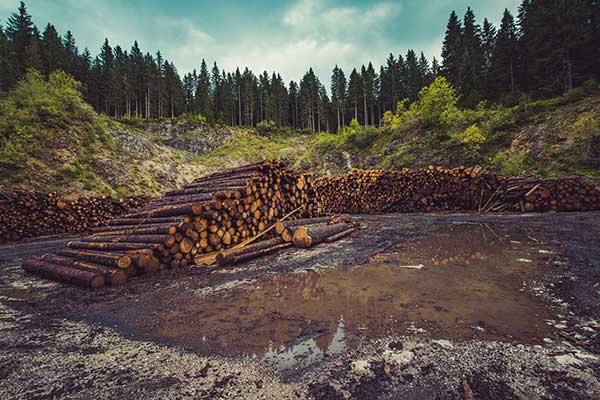
Land Degradation
Tourism development often goes hand-in-hand with the conversion of land and destruction of natural habitats. Forests are cleared, mangroves removed, and wetlands drained to make way for resorts, piers, and golf courses. These land use changes can also trigger further environmental damage, such as beach and soil erosion.
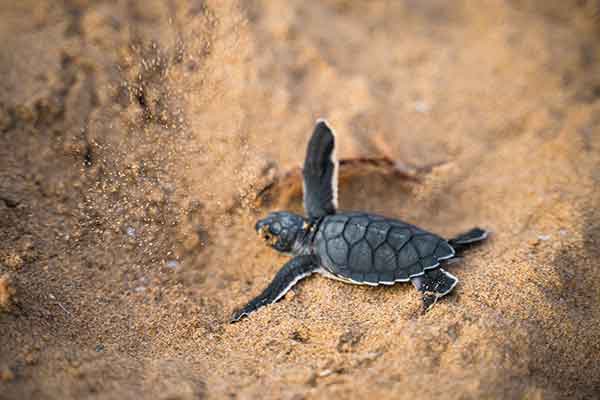
Harm to Wildlife
When important habitats are destroyed by tourism development, it jeopardizes the survival of the wildlife that depend on them. New development can bring an influx of tourists to an area. If facilities are built too close to sensitive habitats – such as turtle nesting beaches – this can disrupt the natural behavior of the animals that live there.
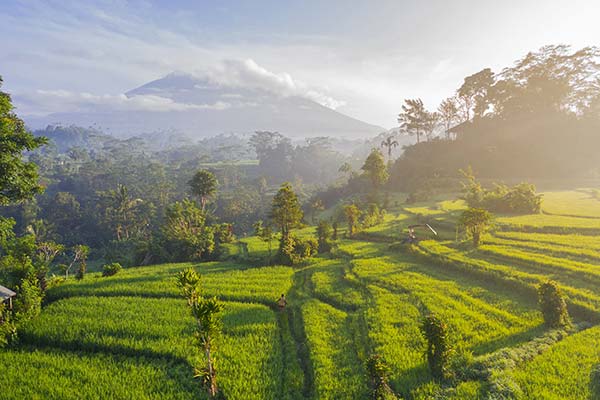
Loss of Natural Scenery
Unique natural landscapes and scenic views add to the charm and allure of many destinations. Unfortunately, new tourism development can wreak havoc on natural scenery. When buildings are constructed and land paved over, it can lessen the natural beauty of a destination and degrade the overall visitor experience.
How We Safeguard Nature
Discover what we’re doing to protect nature and minimize tourism’s impacts on environments and wildlife.
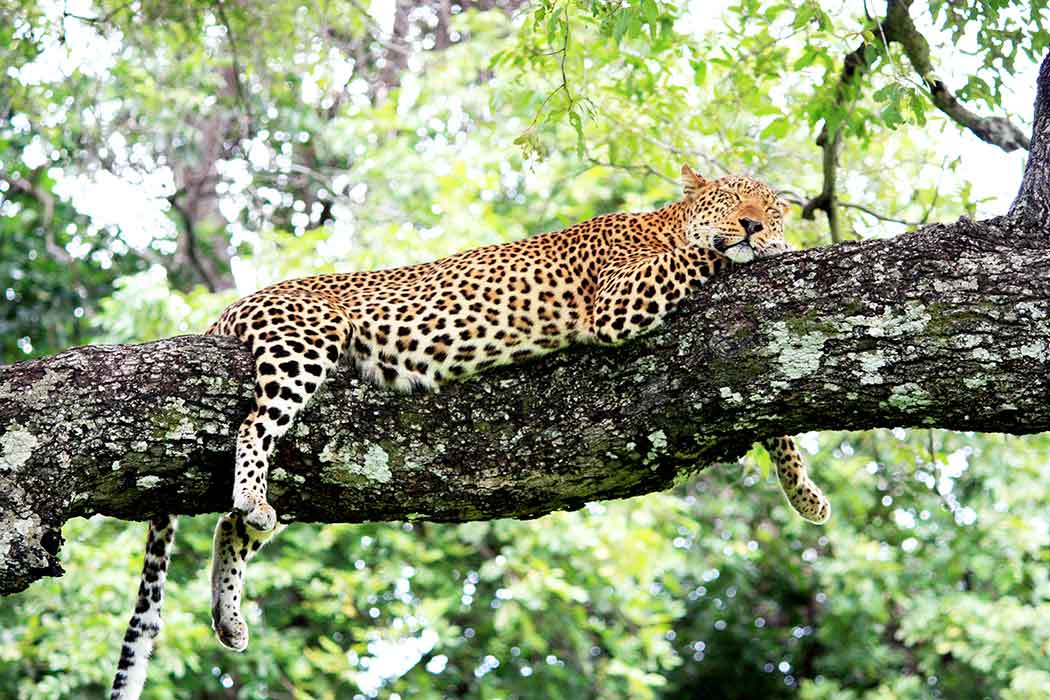
Stay Connected
Join our mailing list to receive email updates about our work and learn how you can make a difference!
Newsletter Signup
- Enter your email address
- Email This field is for validation purposes and should be left unchanged.
- © 2024 | Sustainable Travel International
- Privacy Policy
Download Our Sustainable Travel Tips List
Subscribe to get your free tips list, plus sustainable travel emails and content
Check your inbox for our Sustainable Travel Tips.
- Skip to main content
- Skip to "About government"
Language selection
Destruction bay, yt.
Please note that the browser or operating system used on your device is no longer supported. Content may be missing or not displayed as expected, it is best to use the latest version of Edge, Firefox, Safari or Chrome.
No alerts in effect
Current conditions observed at: burwash airport 2:43 am mst friday 23 august 2024.
- Past 24 hours
- Weather Radar
Forecast Forecast issued : 4:00 PM MST Thursday 22 August 2024
- Hourly Forecast
- Air Quality
Chance of showers
Partly cloudy
A mix of sun and cloud
Detailed Forecast Forecast issued : 4:00 PM MST Thursday 22 August 2024
Historical weather data.
The Historical Climate Data website provides a Historical data search and download for past canadian hourly, daily and monthly weather data. It also provides Almanac Averages and Extremes temperature and precipitation values for a particular station over its entire period of record.
Print Instructions
No endorsement of any products or services is expressed or implied.

Location Page - Print Instructions
- Use the collapsible arrows at the top of each section to hide or unhide the sections that you want to print.
- Use your browser's print action to print the displayed content on one page. Don't forget to pick your preferred paper size.
NOTE: The print layout will differ slightly from the web page display.
Weather shortcuts
Organize shortcuts.
Select to drag and drop, rename or delete.
No shortcuts
- Report Severe Weather
- Canadian Weather
- Weather Radar - Canada
- Satellite - Canada
- Marine - Canada
- Canadian Ice Service
- Seasonal forecasts
- Extended forecast
- Public Alerts - Canada
- Weather Summaries
- Hazardous Weather
- Global and Regional forecast models
- Water Level and Flow
- Historical Climate Data
- Guide to Public forecasts
- Guide to Marine forecasts
- Guide to Air Quality forecasts
- Canadian Centre for Climate Services Library
- Wind Chill and Humidex Calculators
- Weather and your health
Add this page
Add to shortcuts.
The name you have entered for the shortcut already exists on your Weather shortcuts menu. Would you like to overwrite it?
Rename shortcut
There is already a shortcut with the same name in this list. Do you want to rename " link " to " link(2) "?
Your shortcut list has reached the maximum size of 30
- Go to the desired page on the site, open the Weather shortcuts menu and click on the "Add to shortcuts" button
- Page name will display in the "Add this page" window, the name can be changed by highlighting the text and entering the desired name
- Click on the "Save" button to add the link to the list
- Click on the "X" button to close the panel
- Click on the "Organize shortcuts" button
- Select the link to delete
- Click on the "Delete" button to remove the link from the list
- Click on the "Close" button to save the change
- Click and hold the link and move to new location in the list
- Select the link to rename
- Click on the "Rename" button and change the link name
- Click the enter or tab key
- Use the Tab key to move to a button or link
- Use the Enter key to click on buttons or links
- Use the ↑ Up key to select the link above. If none are selected, it will select the first link.
- Use the ↓ Down key to select the link below. If none are selected, it will select the last link.
- Use the Page Up key to move a selection up in the list.
- Use the Page Down key to move a selection down in the list.
Warning: Clicking on the button below will remove all your customized links.
Customized Weather shortcuts
Save your customized list as a bookmark.
Copy/paste or click on the link below then when the page displays, you can bookmark the page using the web browser. Bookmarking your customized list will allow you to access it even if the local storage on your device is erased.
New Predicting and Alerting Coastal Flooding Program

Find out about coastal flooding coverage, forecasts and warnings in your region

IMAGES
COMMENTS
The result is Overbooked: The Exploding Business of Travel and Tourism. ... Tourism is among the biggest global industries and, as such, has tremendous impacts—environmental, cultural, economic ...
According to the United Nations Environment Programme (UNEP), the three negative environmental impacts of tourism are: the depletion of natural resources, pollution and physical degradation of ecosystems. We will look at these more in detail now. ... Ecosystem disturbance can lead to destruction in the long term. Poor building regulations and ...
3. Circular tides. Global awareness of the footprint of (micro)plastic from tourism gained momentum in 2018. Researchers estimate that an additional 8 million metric tonnes of plastic ends up in the ocean every year. About 40% of all plastic is in single-use packaging, as tourists litter beaches with straws, coffee cups, water bottles and ...
Solid waste and littering. Sewage. Aesthetic Pollution. Physical impacts of tourism development. Construction activities and infrastructure development. Deforestation and intensified or unsustainable use of land. Marina development. Coral reefs. Physical impacts from tourist activities.
Habitat loss, overtourism, and the consequences of climate change have put more and more travel destinations at peril, even as the pandemic's forced shutdowns gave once tourist-trampled places a ...
A French start up, Murmuration, which monitors the environmental impact of tourism by using satellite data, states that 80% of travellers visit just 10% of the world's tourism destinations ...
Along with crowding destinations, overtourism can damage the environment. Traveling on a long-haul flight requires the use of fossil fuels and releases emissions. Once tourists arrive at their ...
Tourism - one of the world's largest industries, worth 7.6% of global GDP every year - has a significant impact on the environment, both positive and negative. On the one hand, it can lead to a greater appreciation for nature and conservation, as tourists flock to pristine beaches, undisturbed forests, and scenic landscapes.
Some findings: Against a current ambition scenario, by 2030 transport-related CO 2 emissions from tourism will grow 25% from 2016 levels (from 1597 Mt of CO 2 to 1998 Mt of CO2).This growth in CO 2 emissions will represent 5,3% of all man-made emissions in 2030 (from 5% in 2016). Intra-regional (within the same region) international travel ...
1 Destruction of natural ecosystems. The flora and fauna are usually the first to suffer overtourism in the most popular natural tourist destinations. In some natural destinations, environmental issues led to the destruction of entire ecosystems. Among these problems, we can mention deforestation, exploitation of the soil and pollution. But ...
Brian O'Donnell, director of the Campaign for Nature, acknowledges that "tourism can be both one of the biggest drivers of biodiversity loss, or a vehicle for biodiversity conservation. And it ...
Tourism makes up 10.4% of the global GDP and offers 313 million jobs corresponding to 9.9% of total employment (World Travel & Tourism Council [WTTC], 2018).Investment in the tourism industry leads to the direct generation of employment opportunities and income in this sector, and also has spillover effects into economic and societal development (Balsalobre-Lorente et al., 2021).
Climate action is understood as the efforts to measure and reduce GHG emissions and strengthen adaptive capacity to climate induced impacts.1. There is a growing consensus among tourism stakeholders as to how the future resilience of tourism will depend on the sector's ability to embrace a low carbon pathway and cut emissions by 50% by 2030.
The negative environmental impacts of tourism are substantial. They include the depletion of local natural resources as well as pollution and waste problems. Tourism often puts pressure on natural resources through over-consumption, often in places where resources are already scarce. Tourism puts enormous stress on local land use, and can lead ...
As Thailand closes one of its islands due to the environmental damage caused by mass tourism, we take a look at some other popular destinations facing destruction
There are many positive aspects to tourism. Around two billion people travel each year for tourism purposes. Travel and tourism connect people and bring the world closer through shared experiences, cultural awareness and community building. It provides jobs, spurs regional development, and is a key driver for socio-economic progress.
The empirical research investigated the relationship between tourism development and environmental suitability to propose a framework for sustainable ecotourism. The framework suggested a balance between business and environmental interests in maintaining an ecological system with the moderating help of government support and policy interventions. The study population encompasses tourism ...
Abstract. Tourism development has often been considered as a growth pillar over recent decades; however, studies on whether and how it can contribute to pollution reduction are scant. This study fills the research gaps by exploring the role of tourism development in pollution emissions by investigating two influencing mechanisms—the industry ...
Overtourism—which in its simplest form is tourism that harms communities by overuse or destruction of resources through overcrowding—stems from a lack of concern about destination community health and welfare. ... -Results in the destruction of natural environment-Results in tourism revenue going to a few privileged people The growth of ...
The World Tourism and Travel Council says that of 1.4 billion international tourist trips in 2018, more than 36%, or half a billion, involved a visit to one of the planet's 300 most popular ...
Ibiza is as legendary as ever — that includes the hordes of partiers. If you like being around lots of people, then Ibiza could be a good place to go. David Ramos/Stringer. Sun. Sand. Surf ...
Tourism development often goes hand-in-hand with the conversion of land and destruction of natural habitats. Forests are cleared, mangroves removed, and wetlands drained to make way for resorts, piers, and golf courses. These land use changes can also trigger further environmental damage, such as beach and soil erosion.
Current conditions and forecasts including 7 day outlook, daily high/low temperature, warnings, chance of precipitation, pressure, humidity/wind chill (when applicable) historical data, normals, record values and sunrise/sunset times